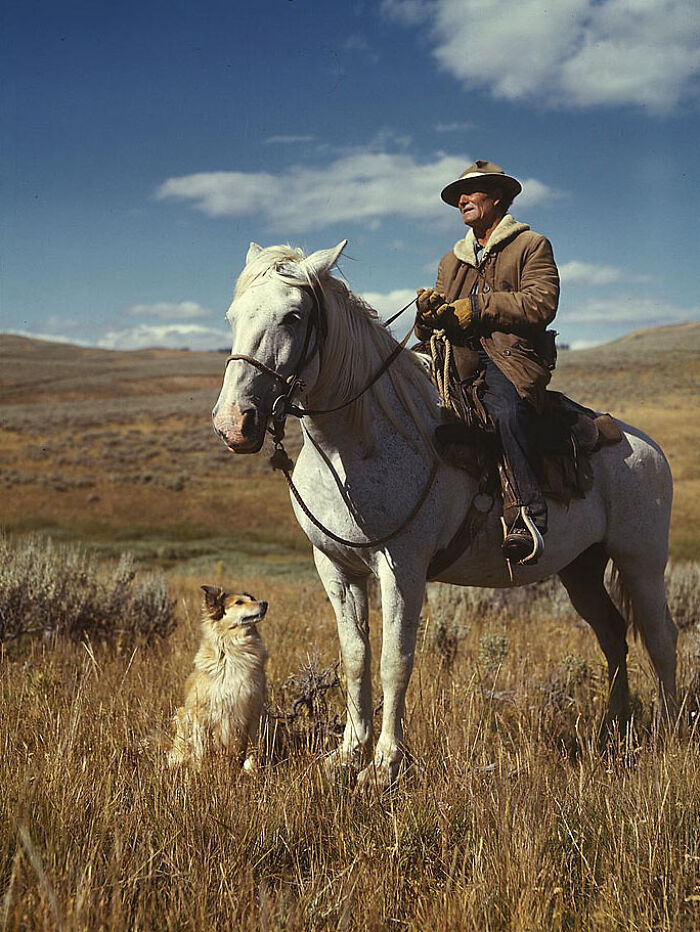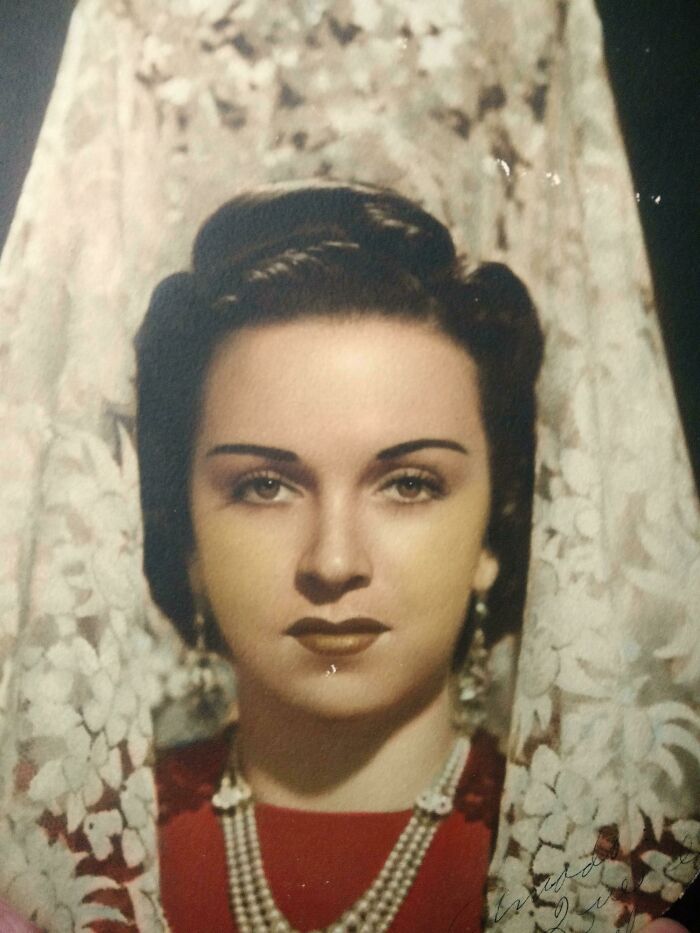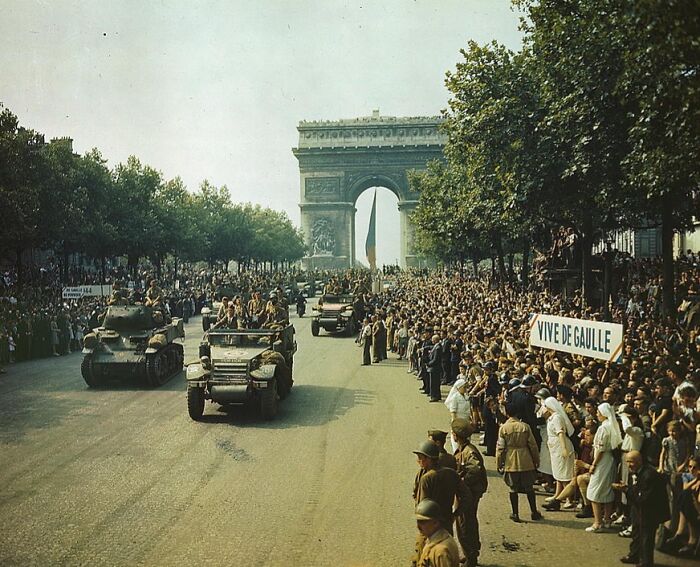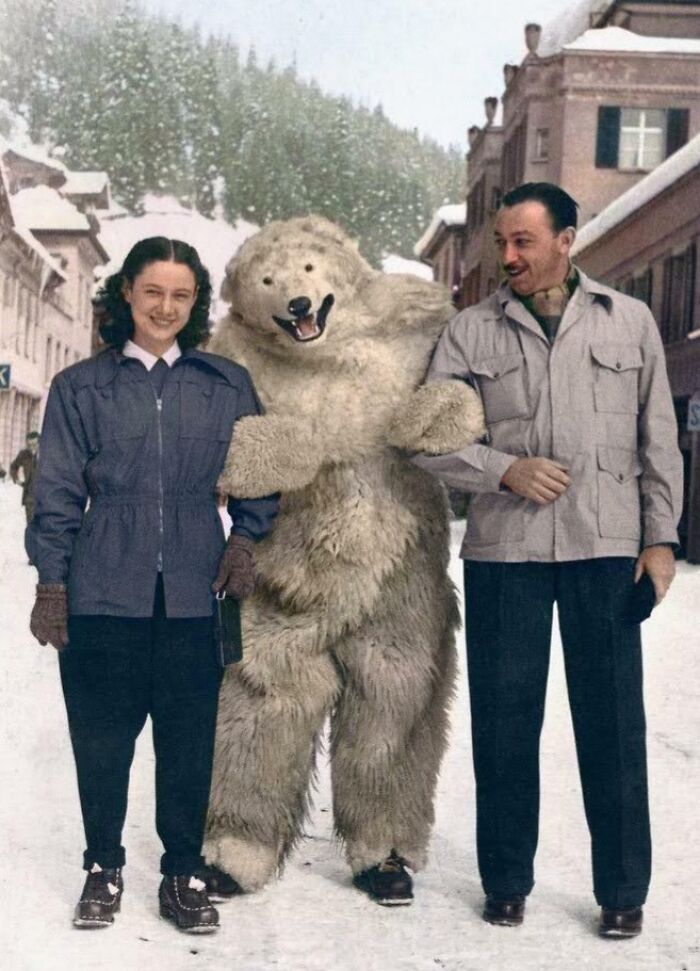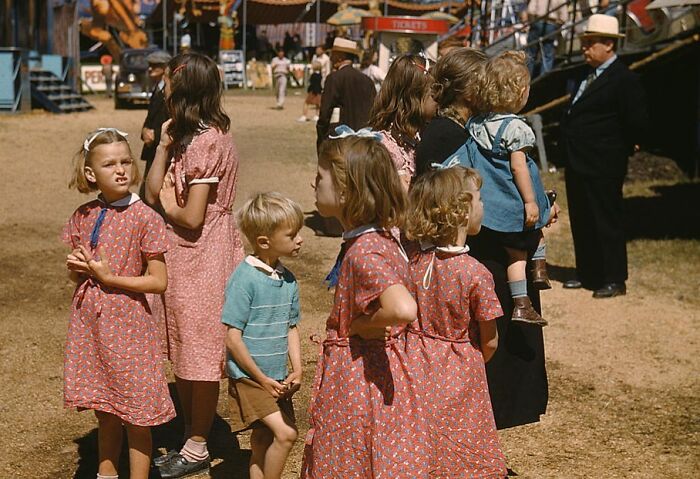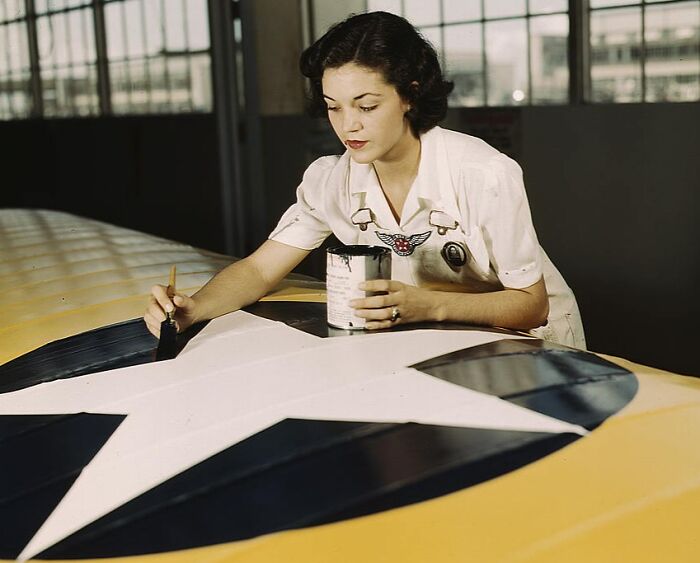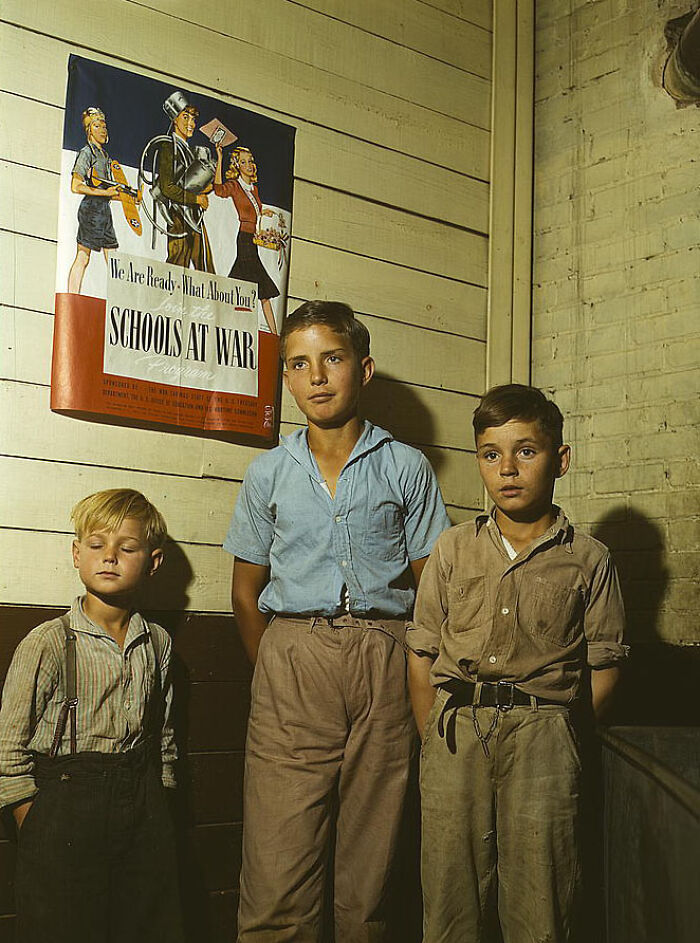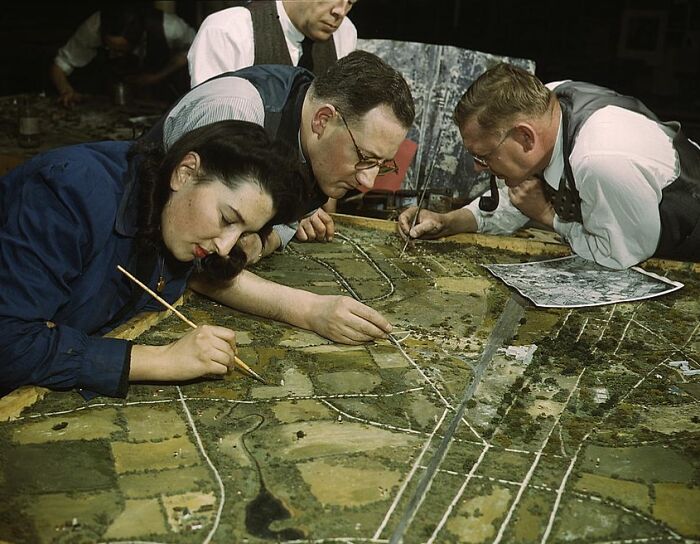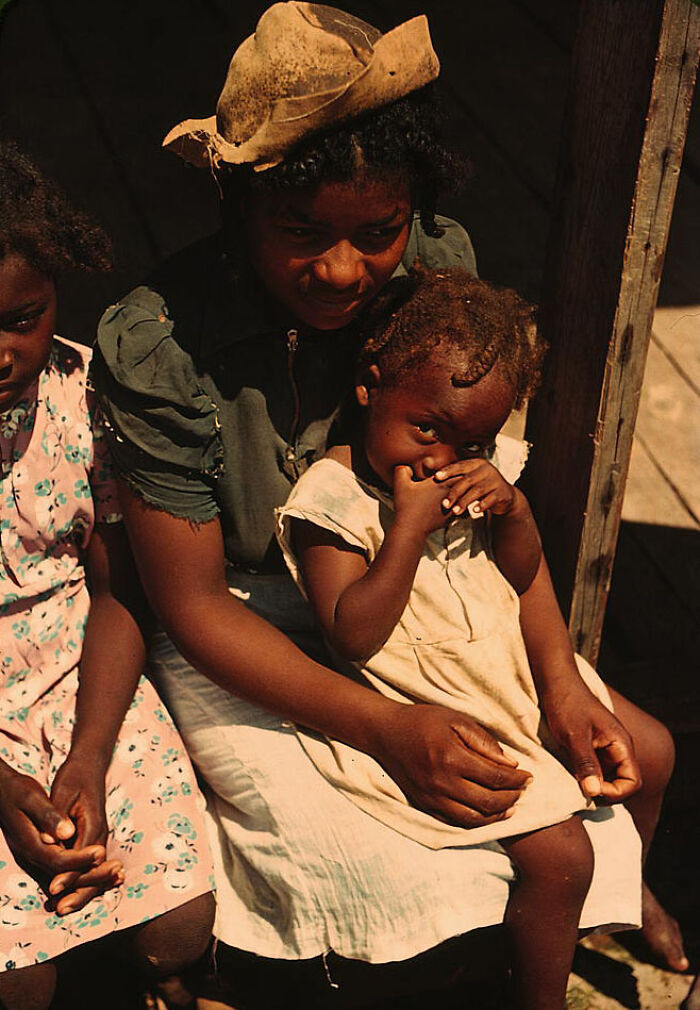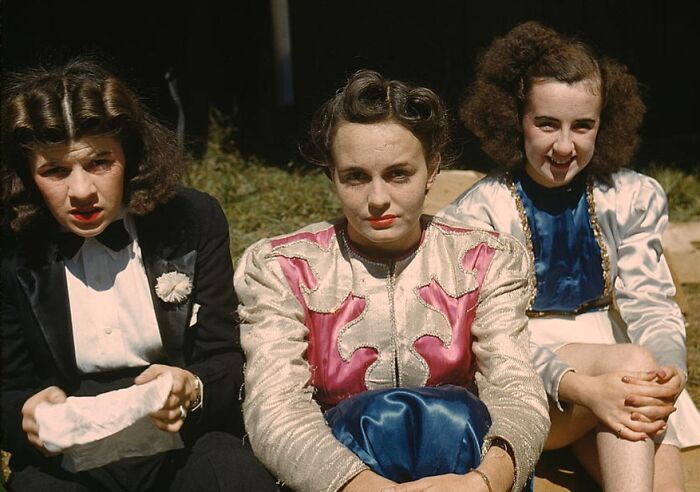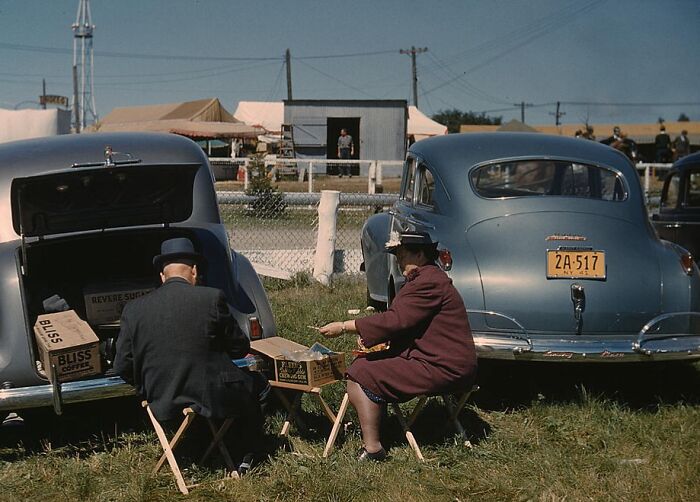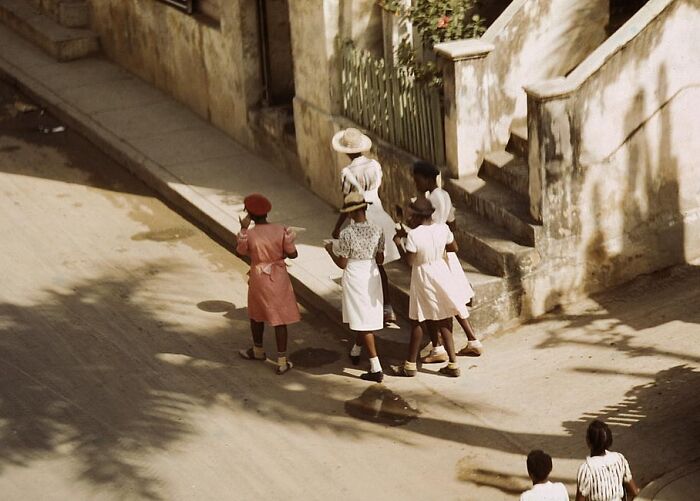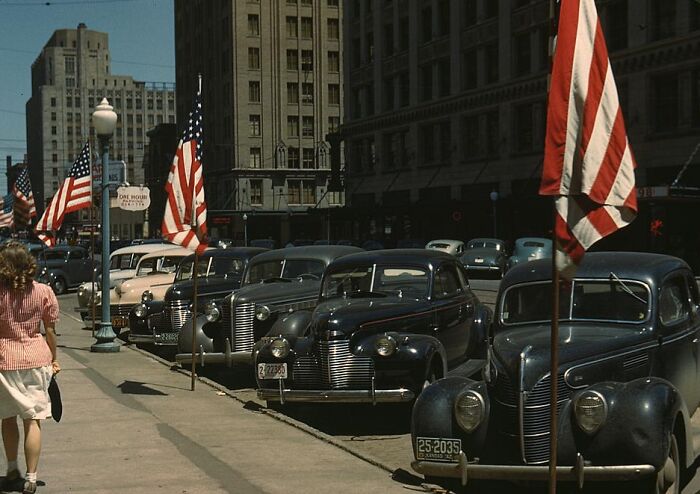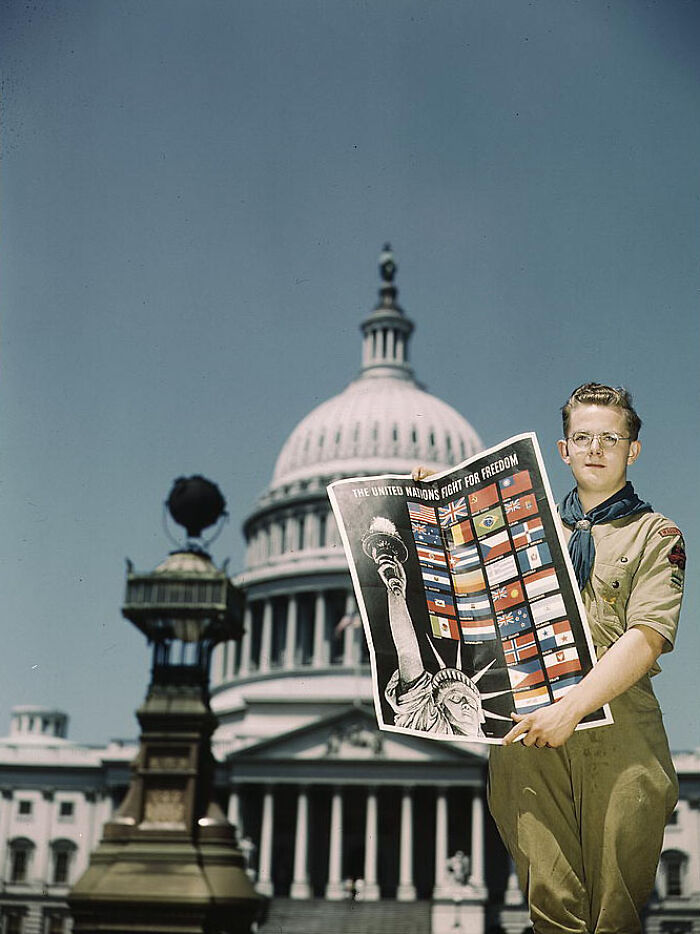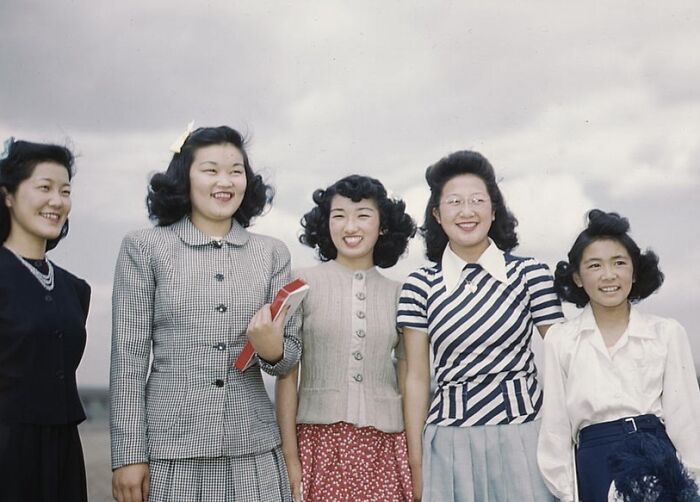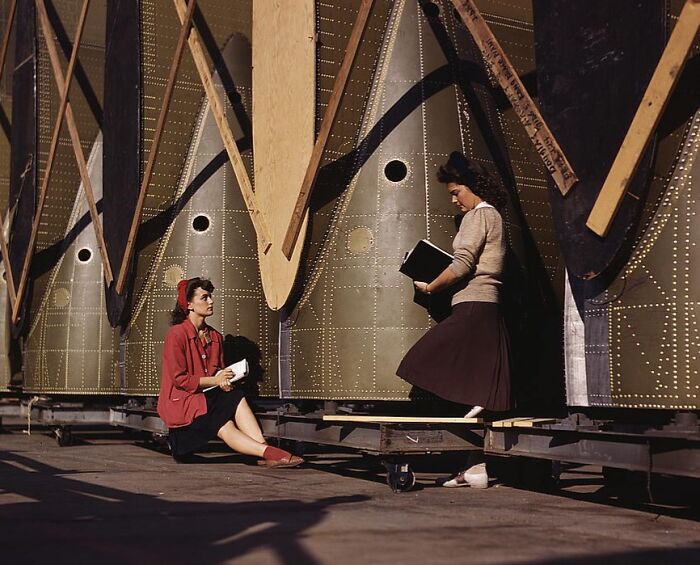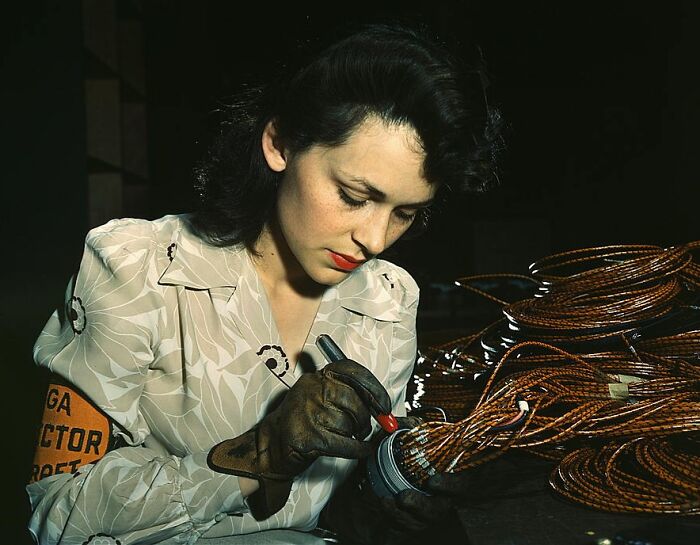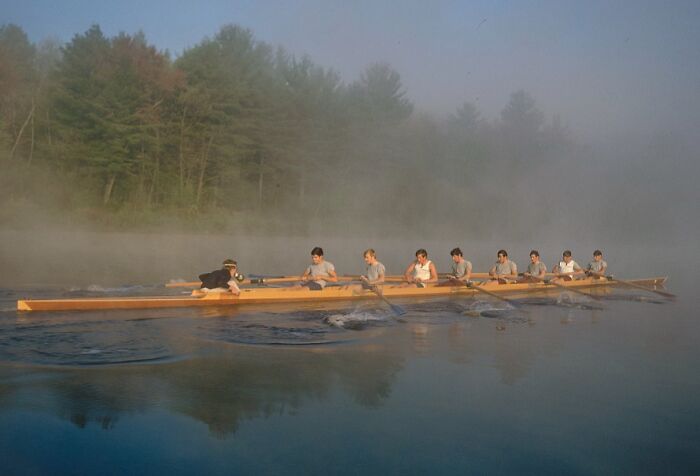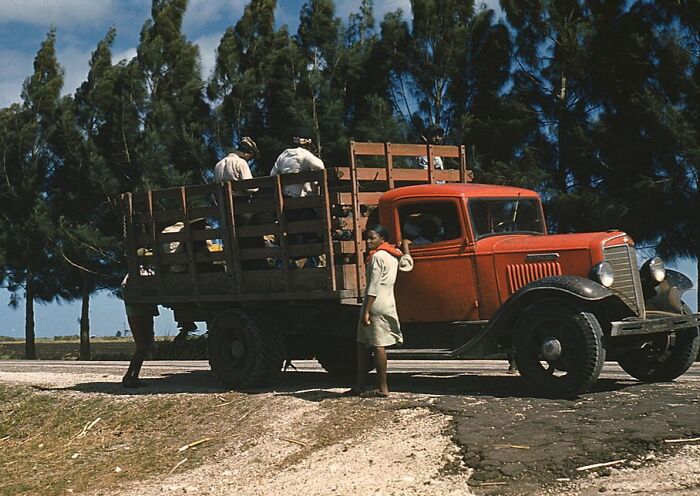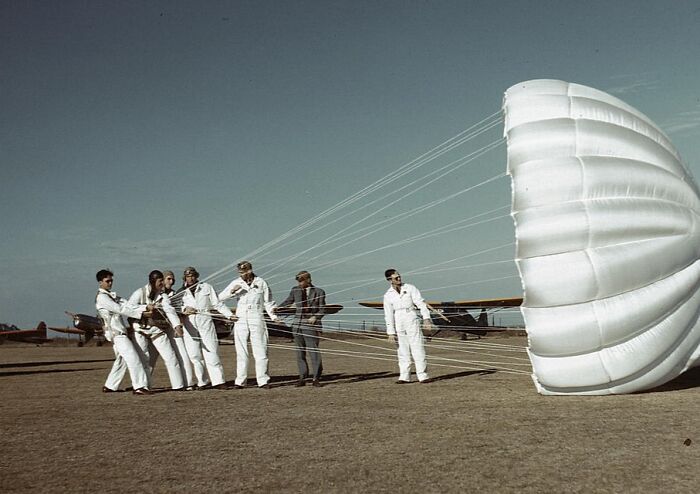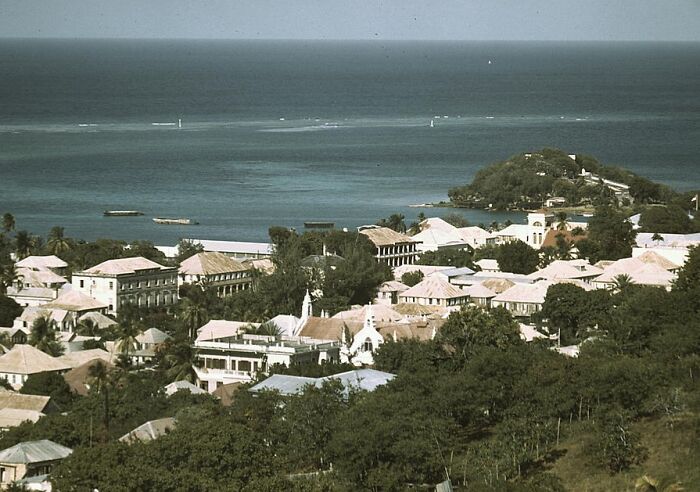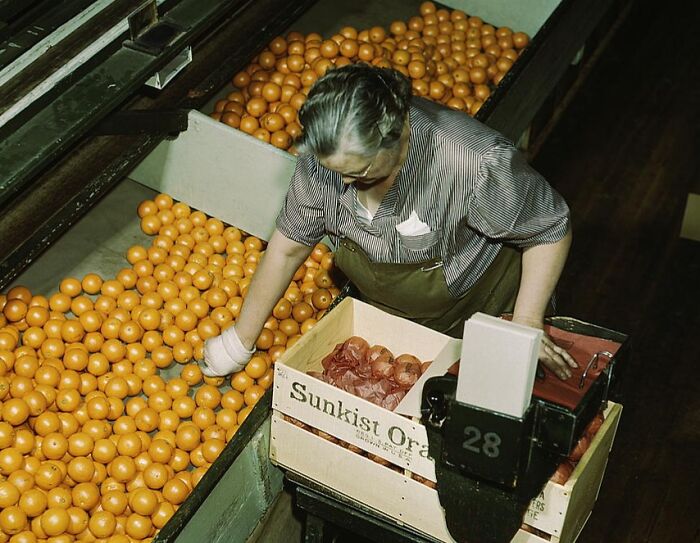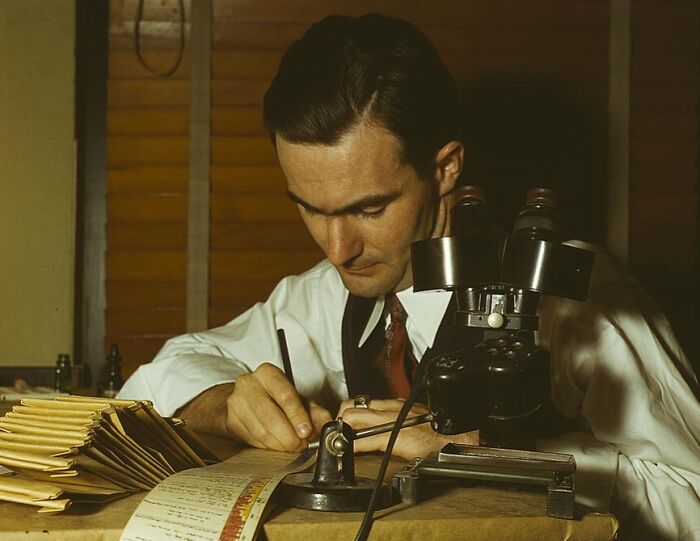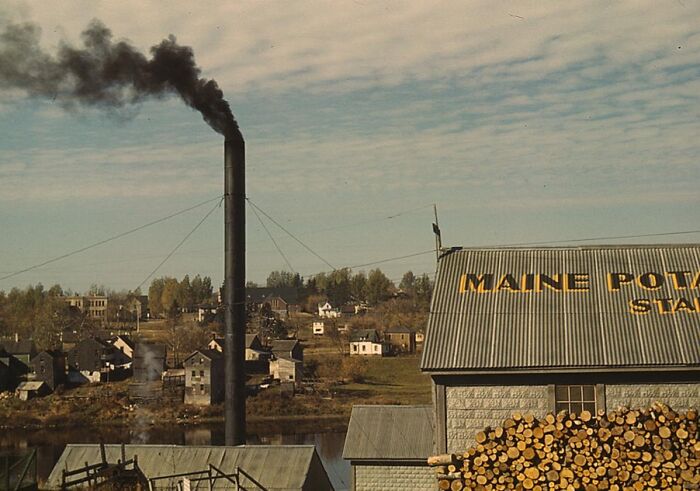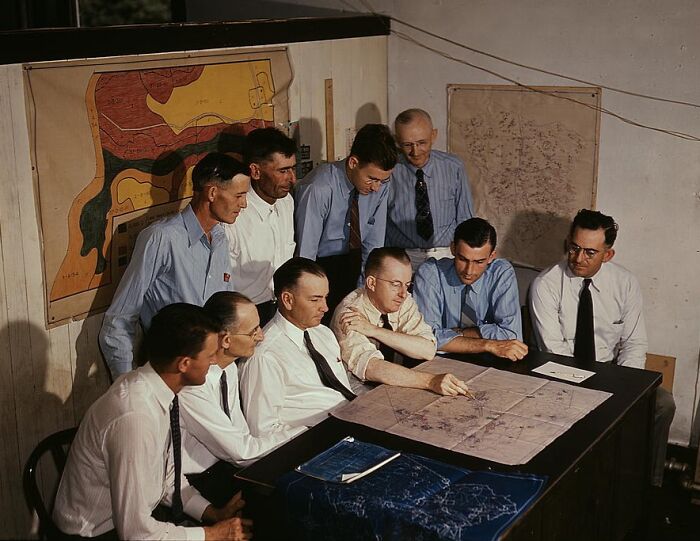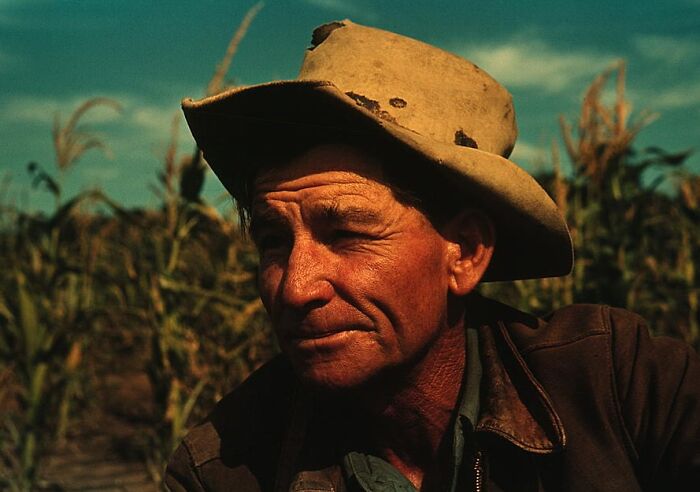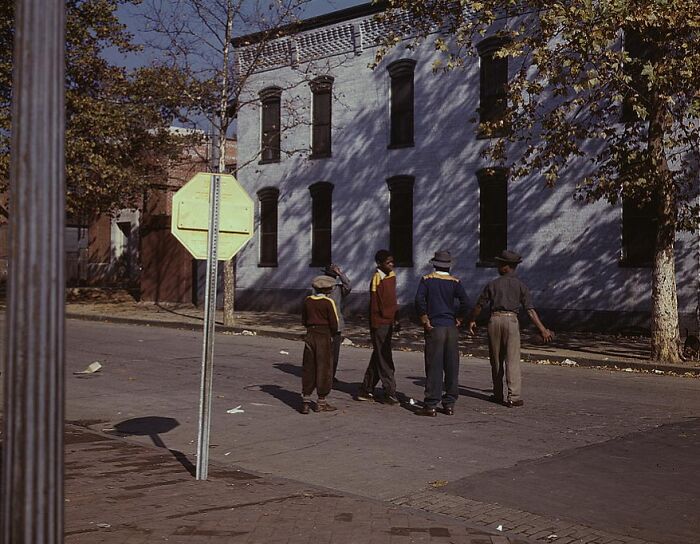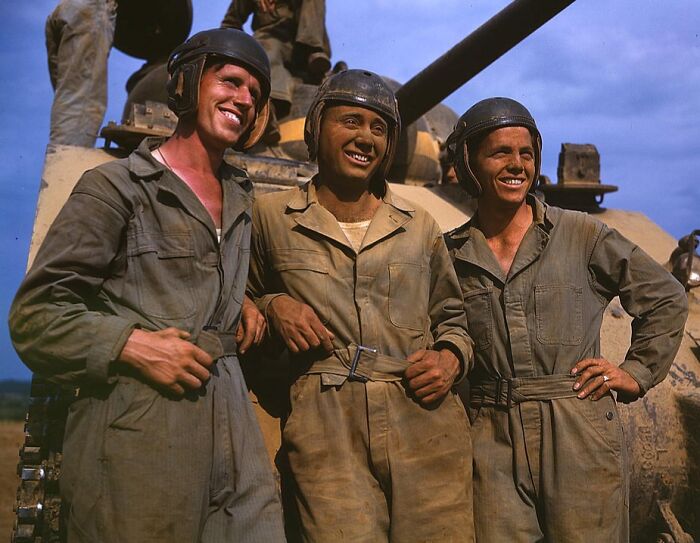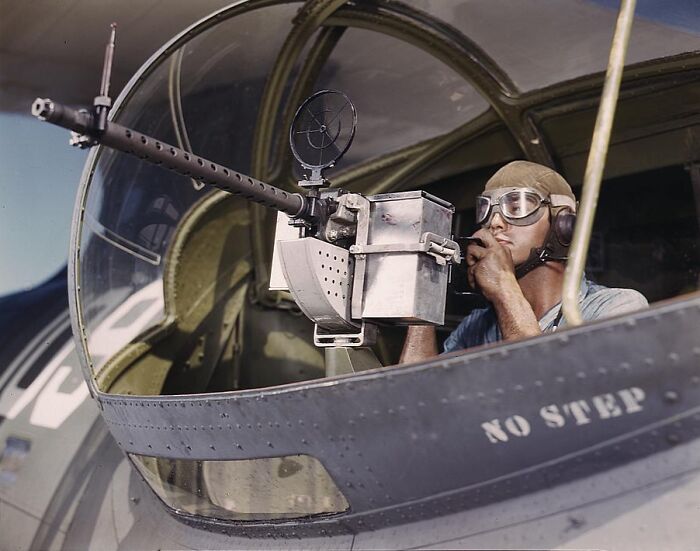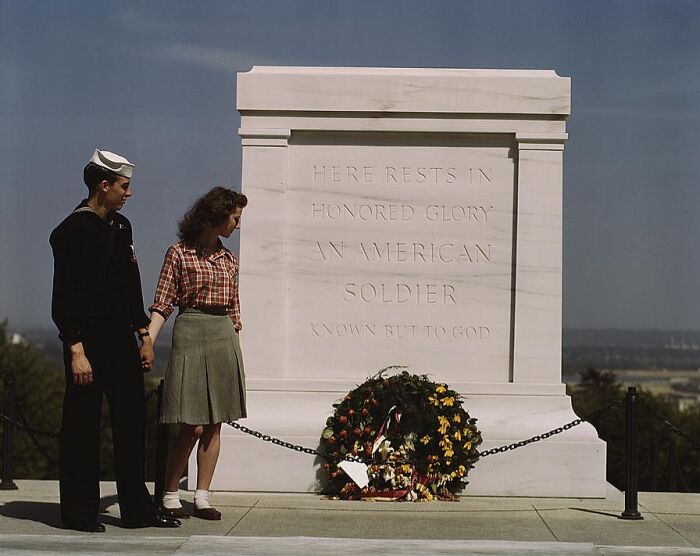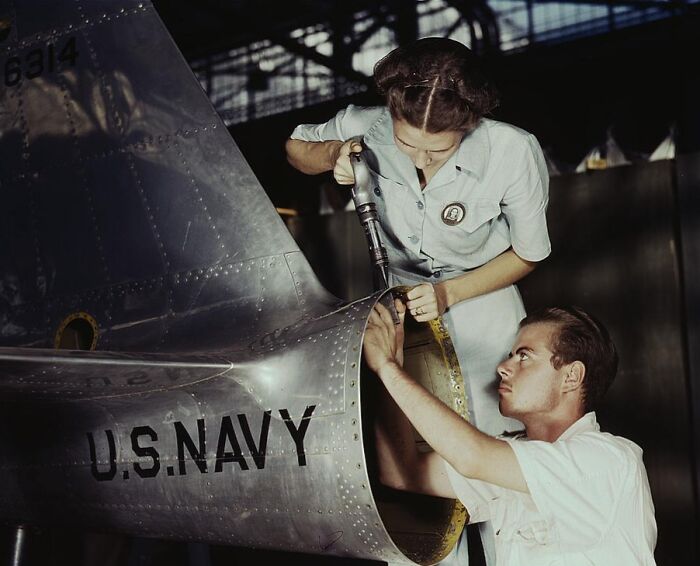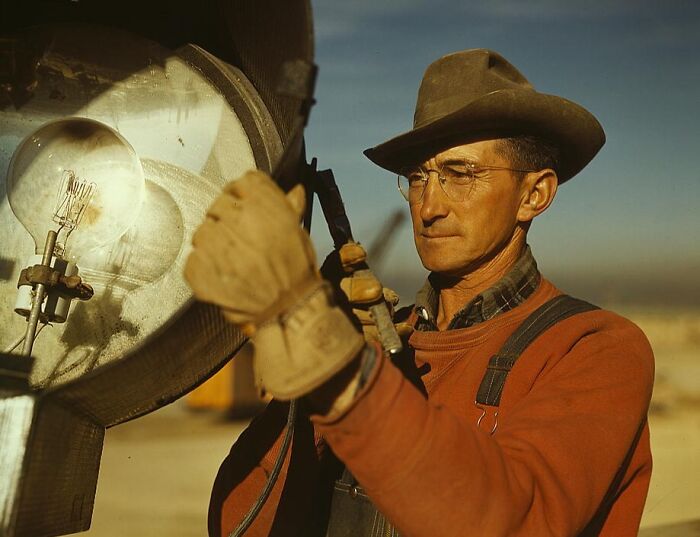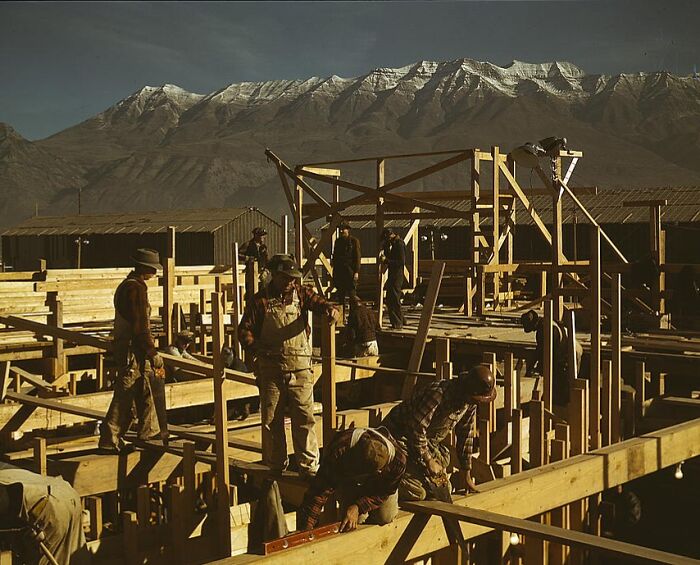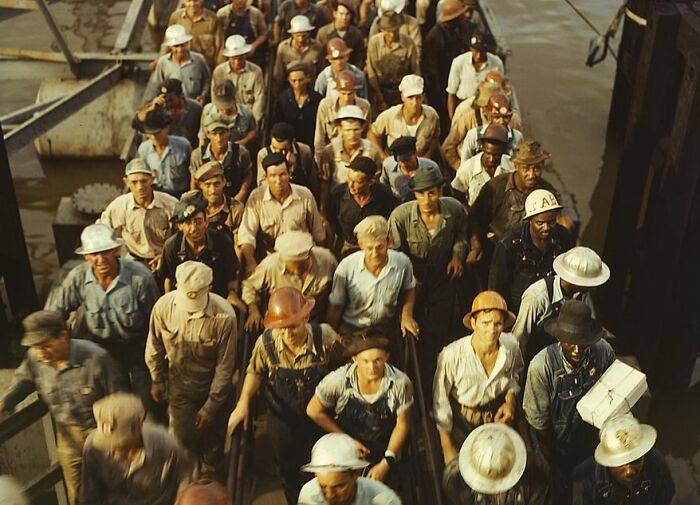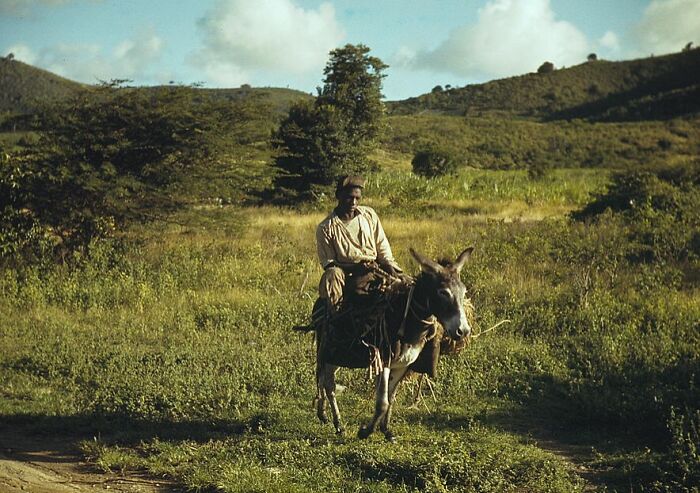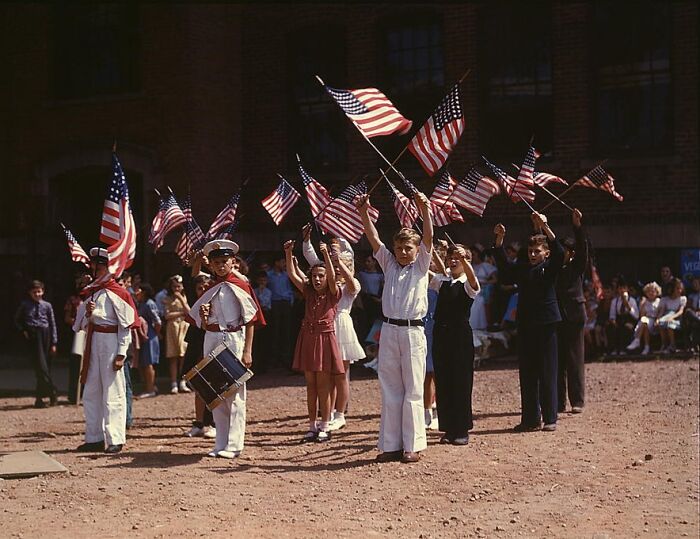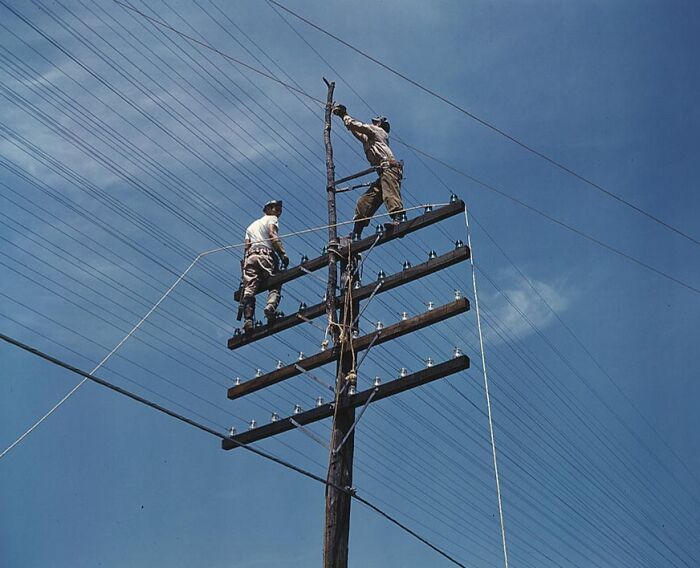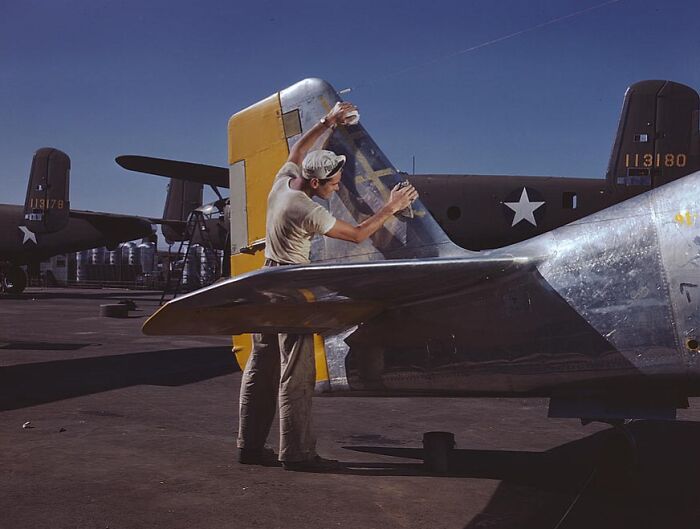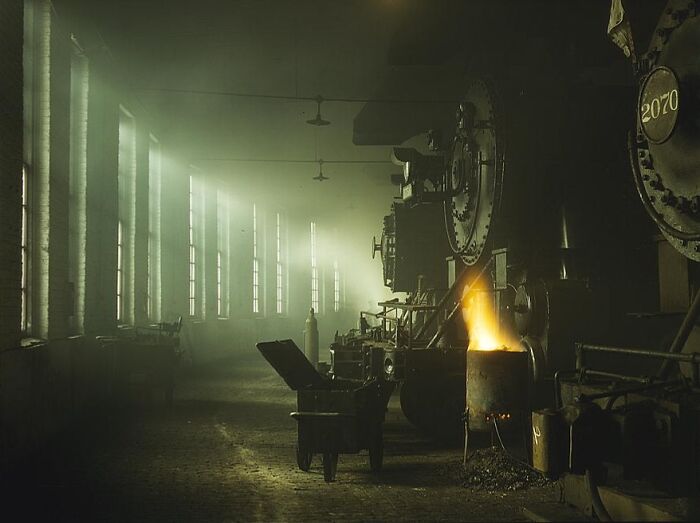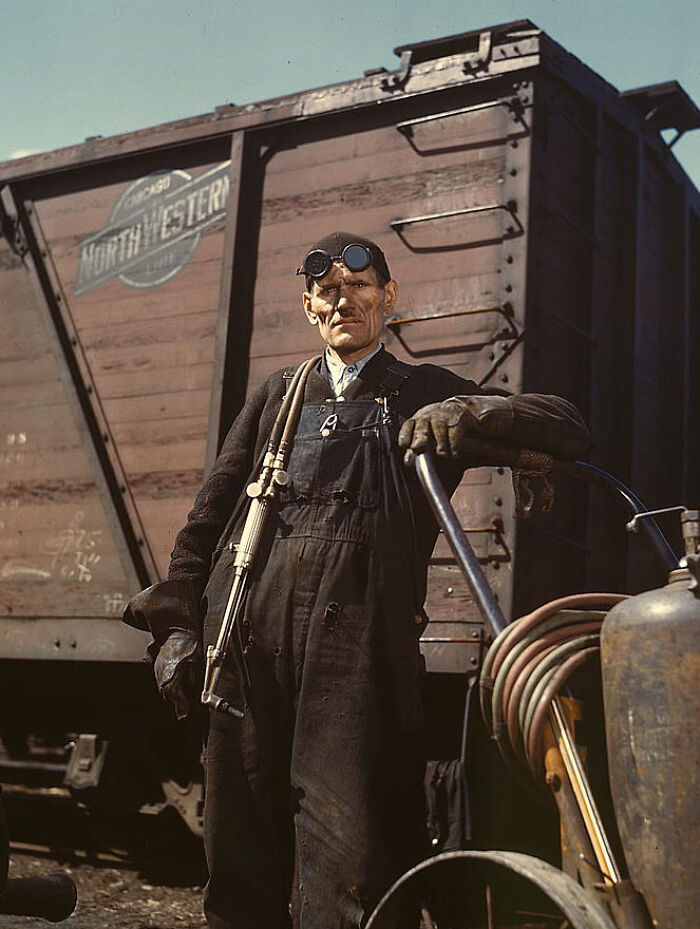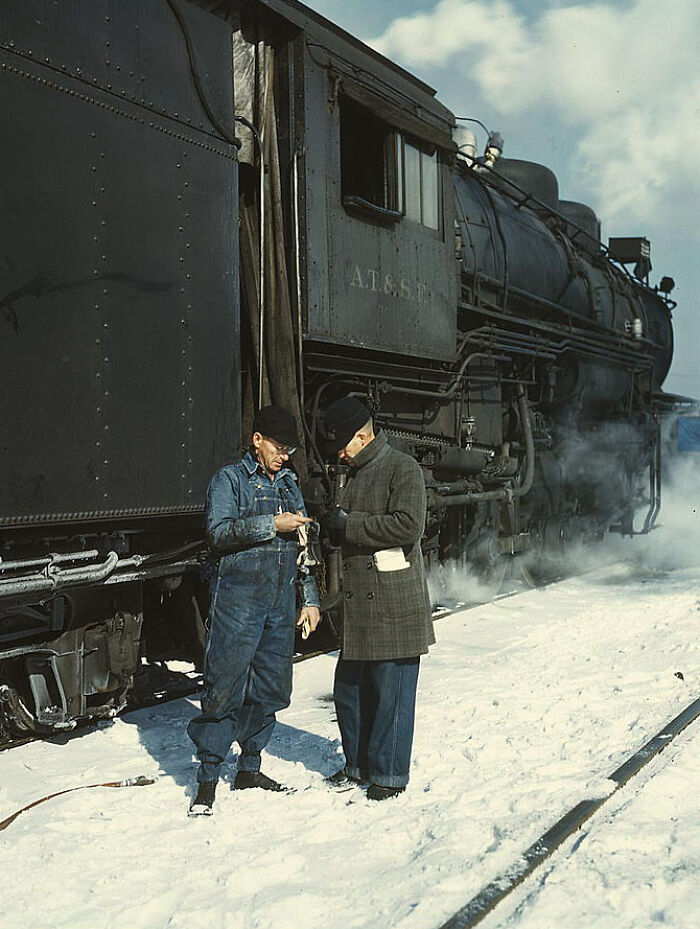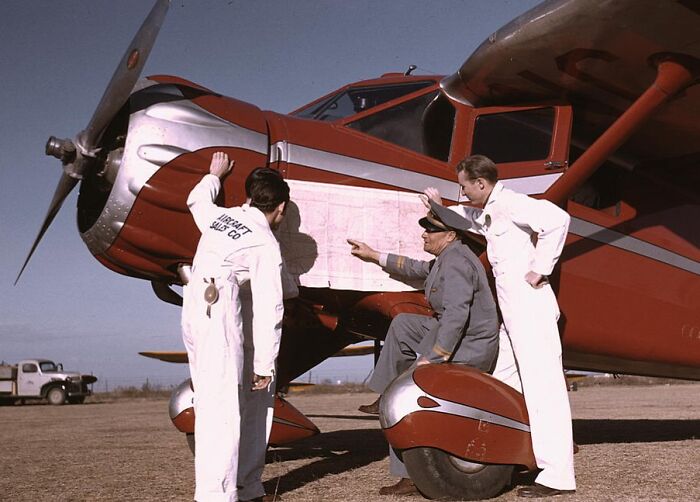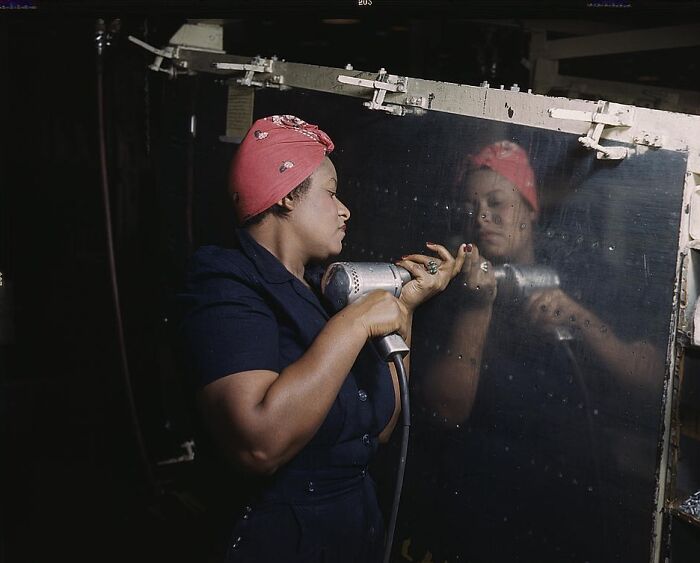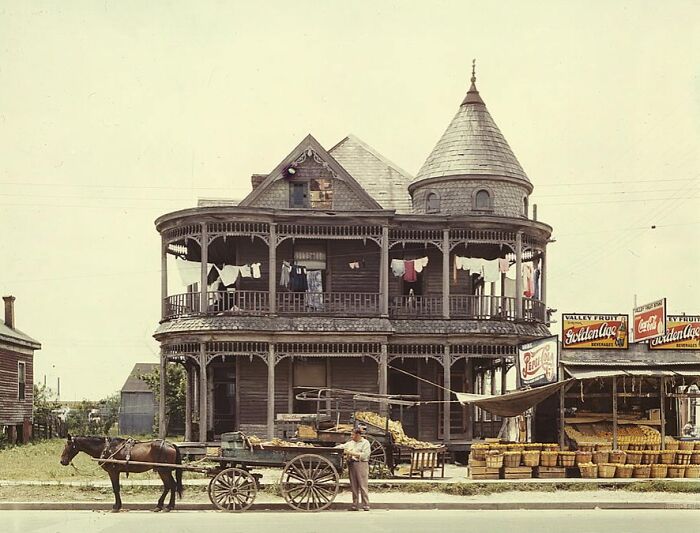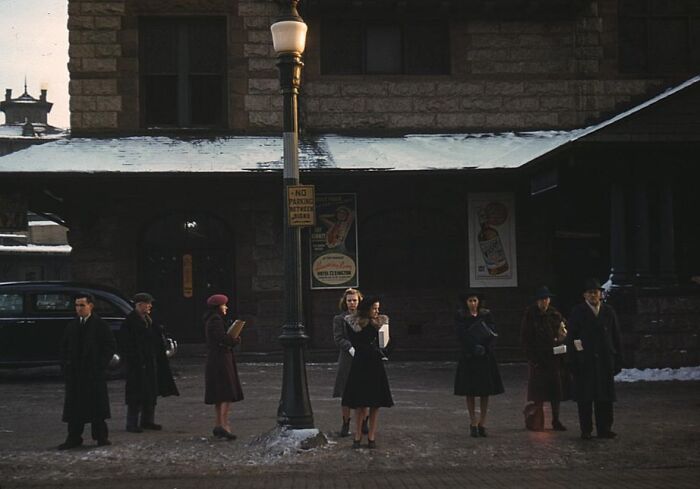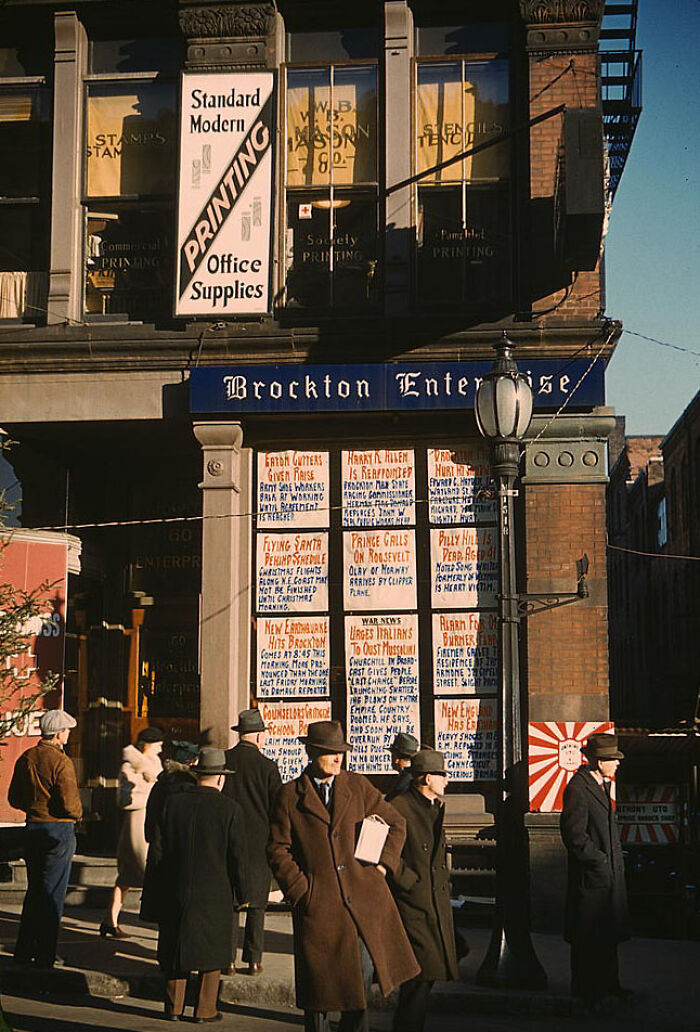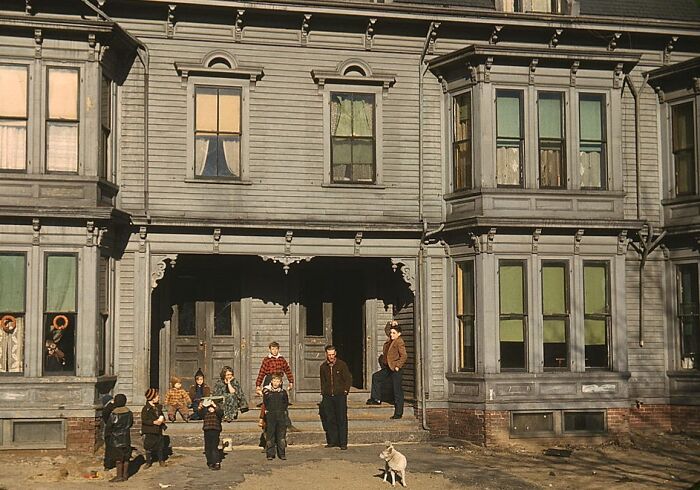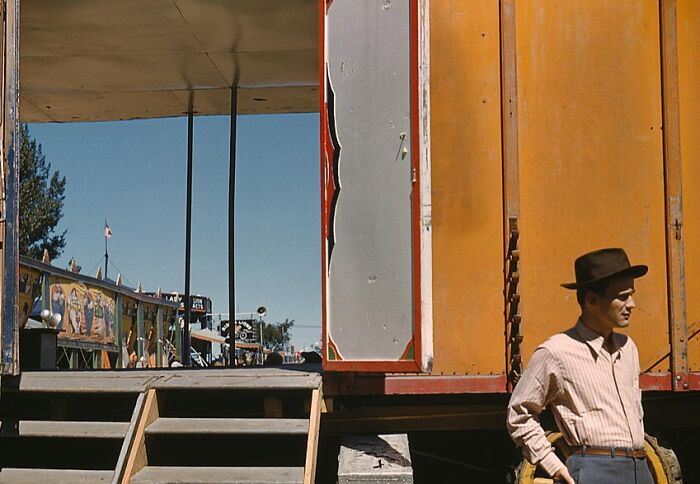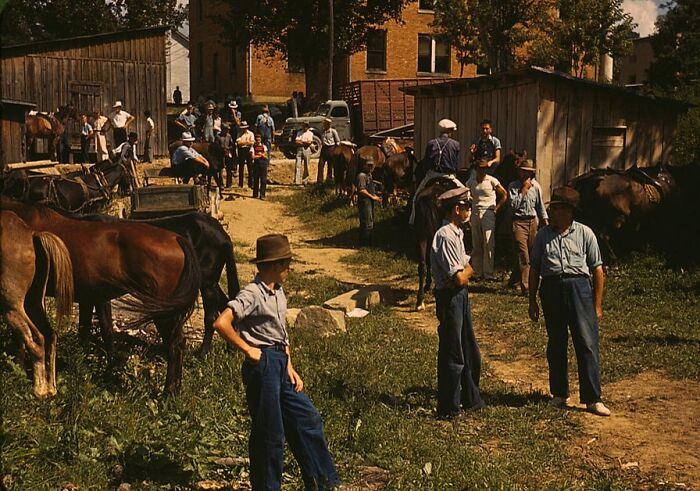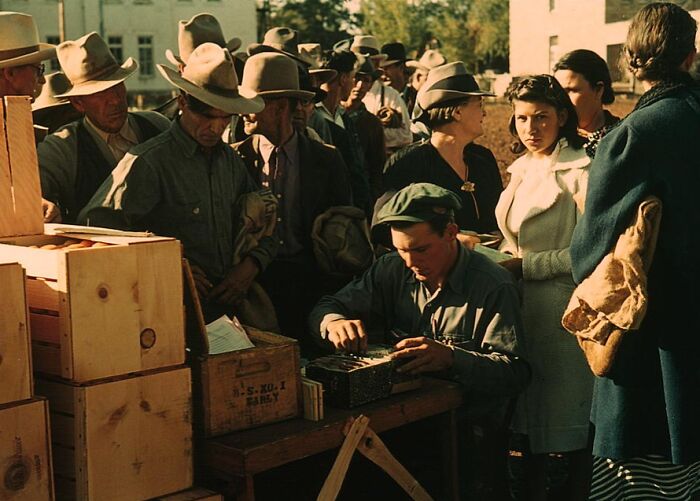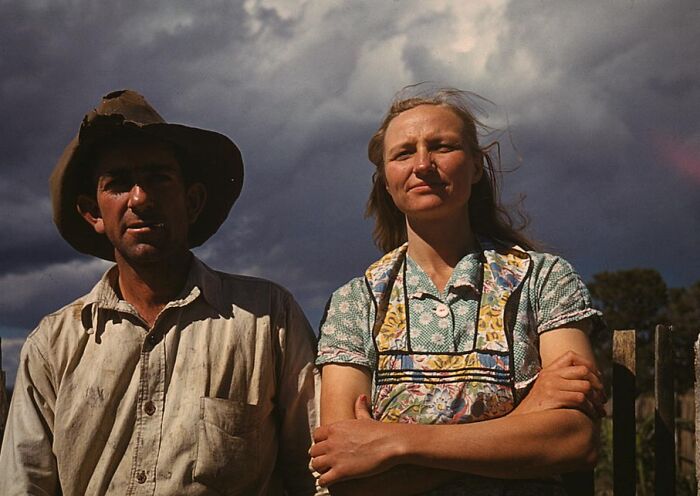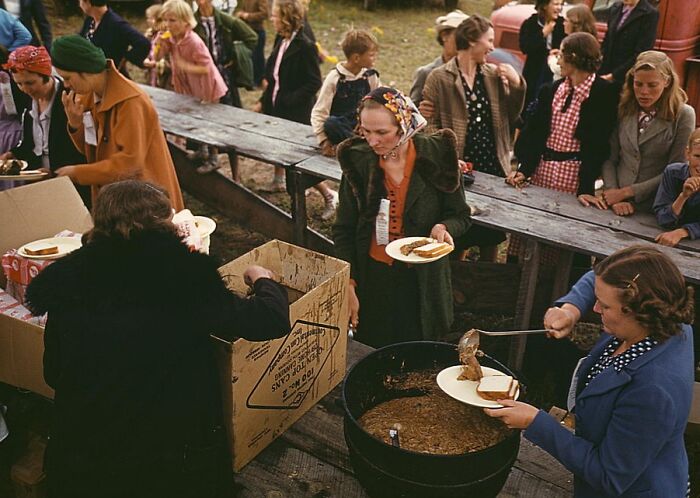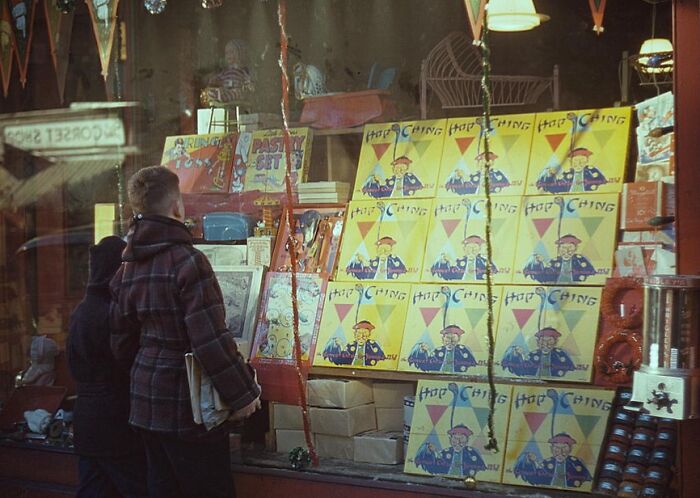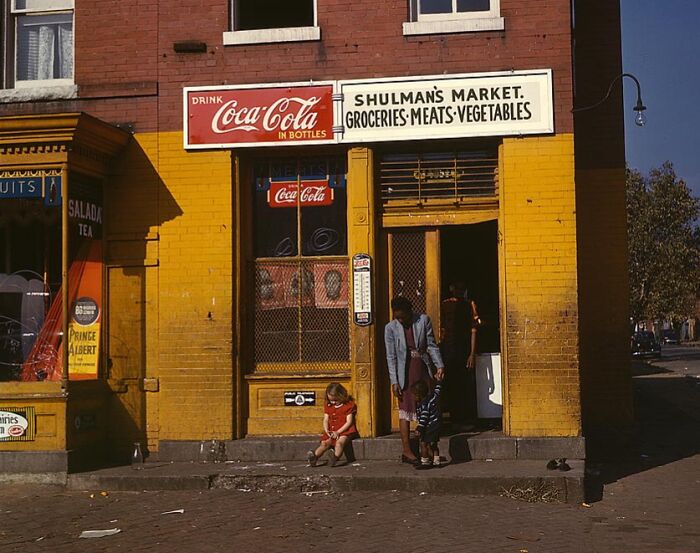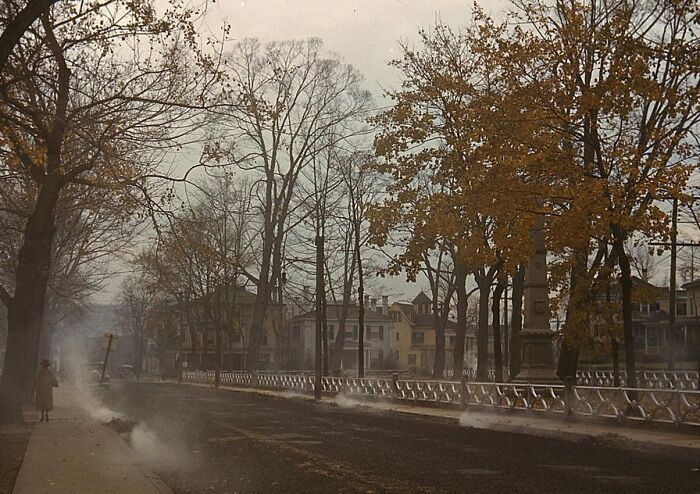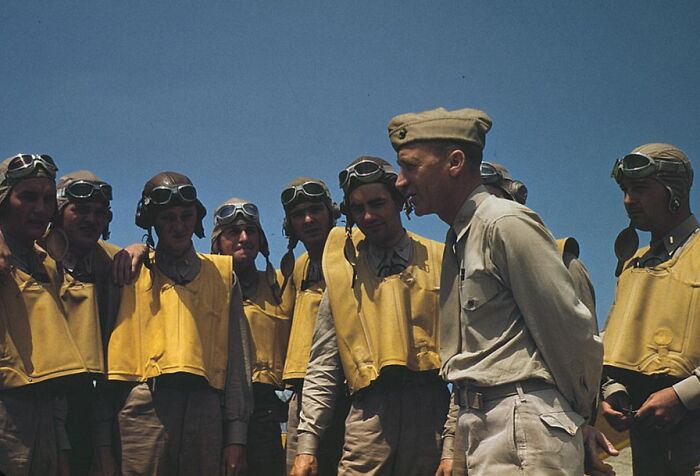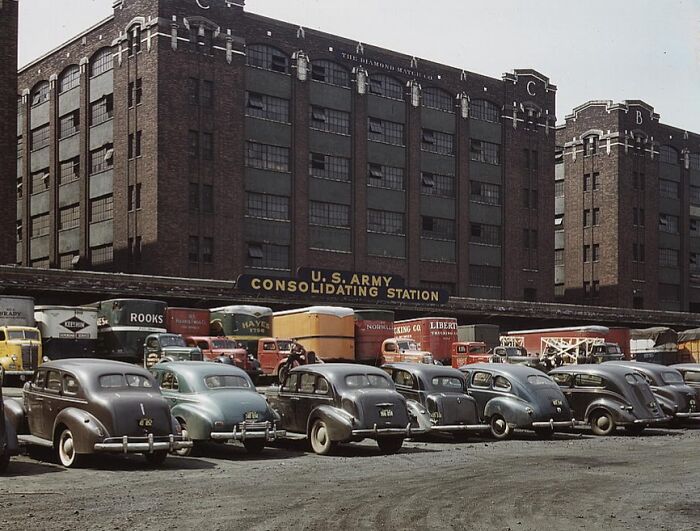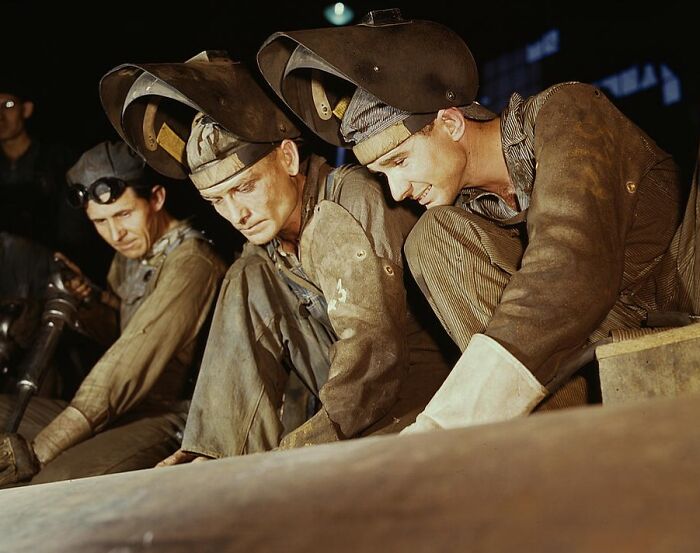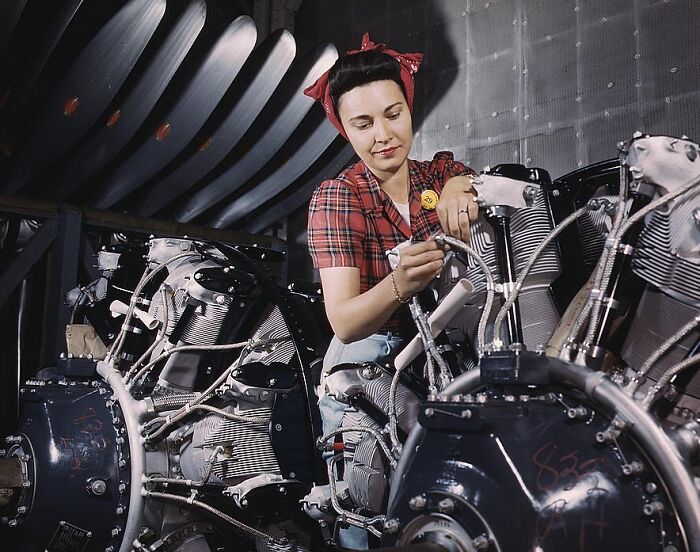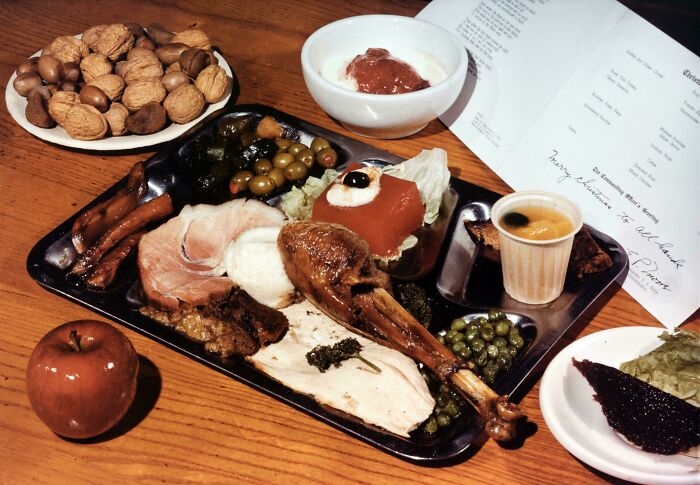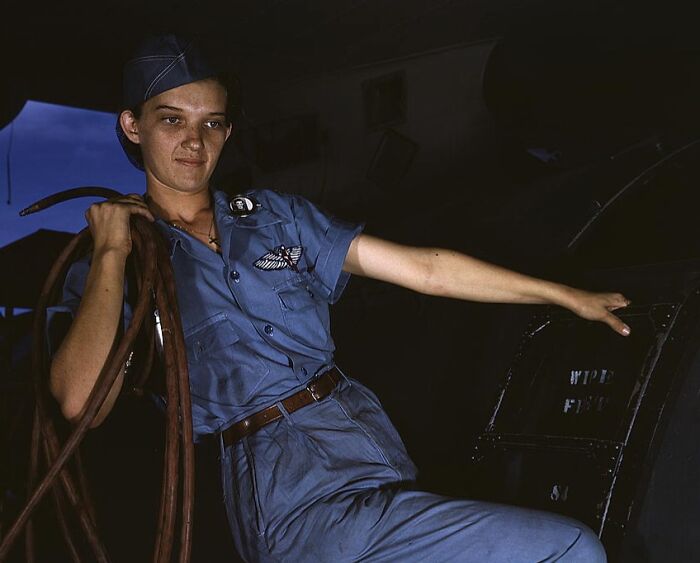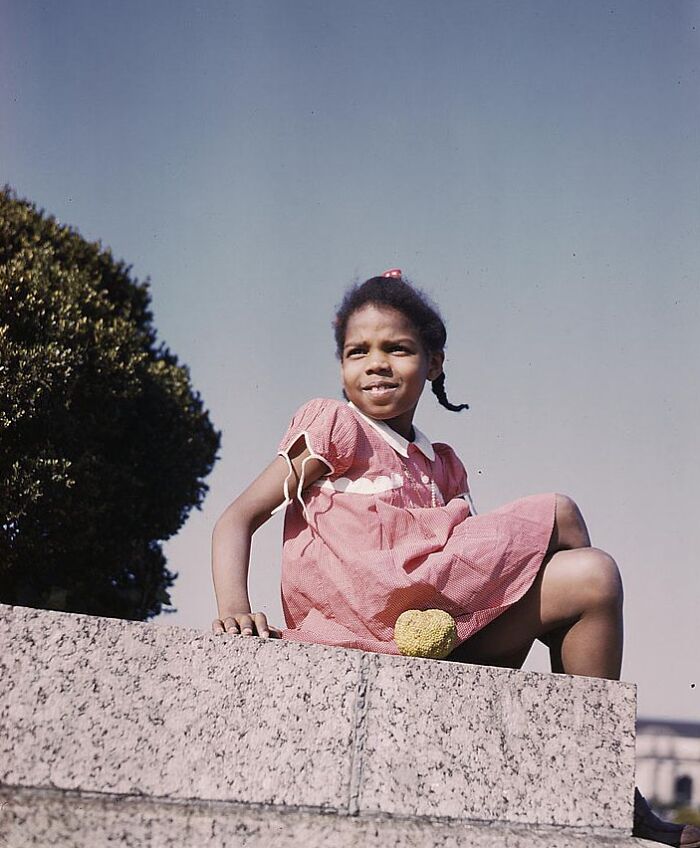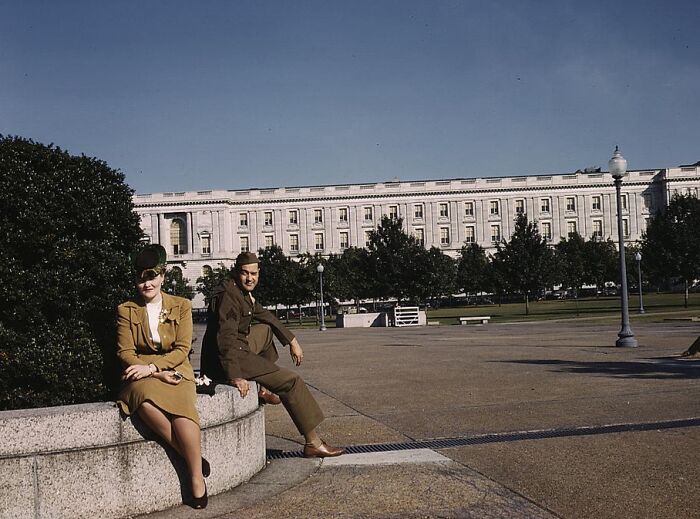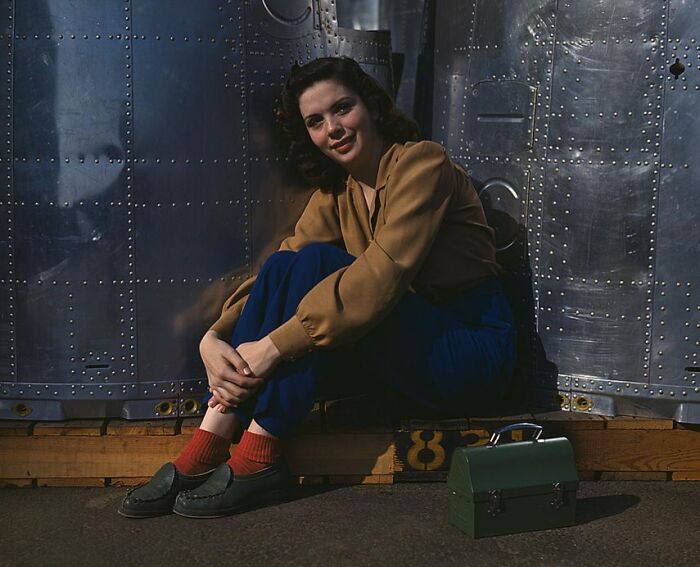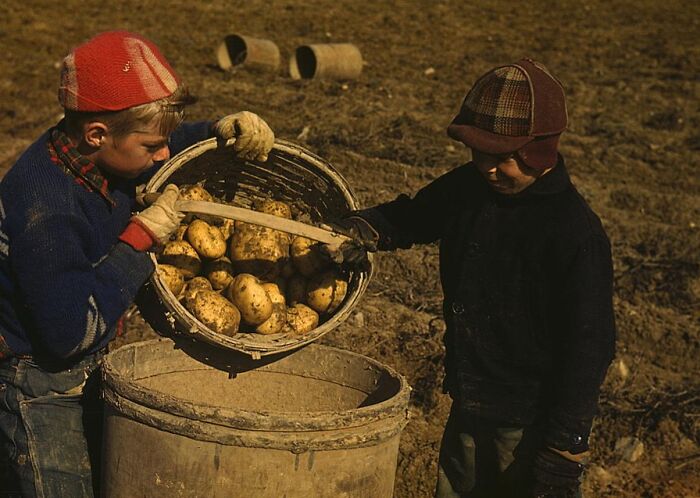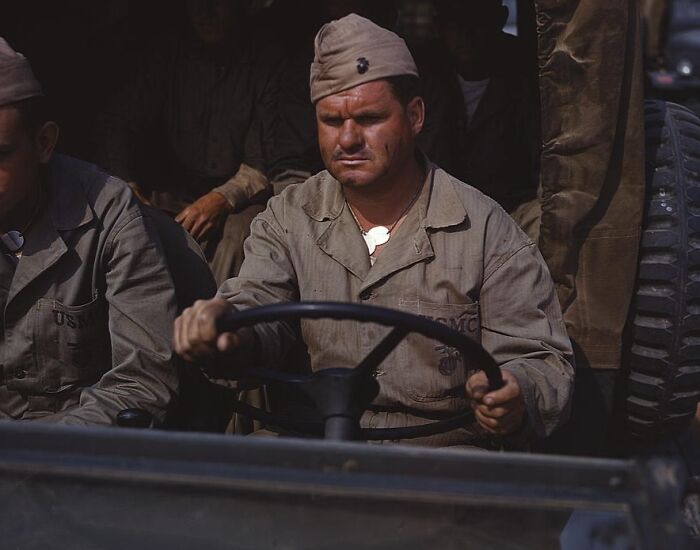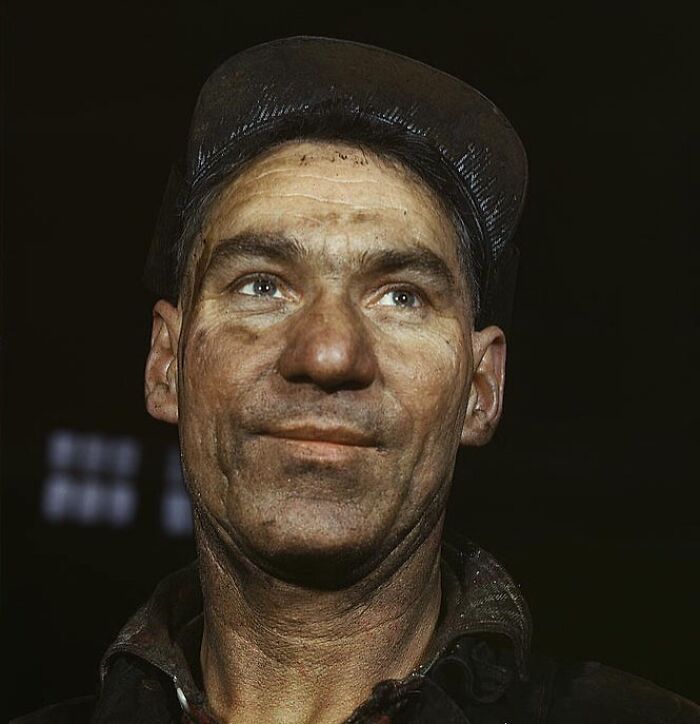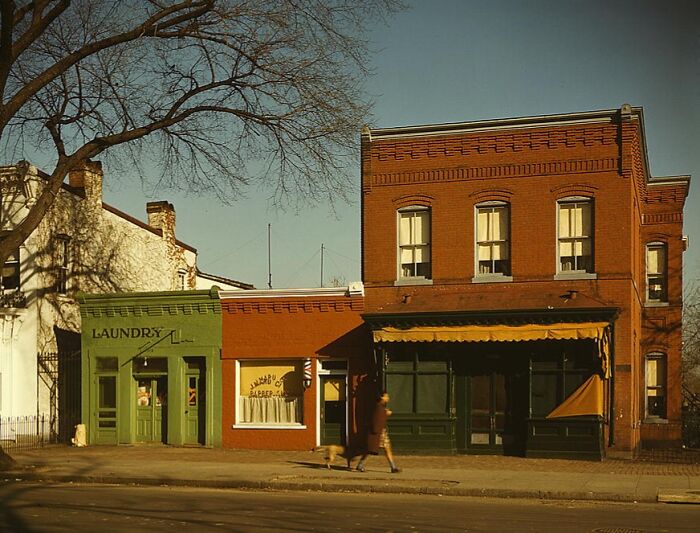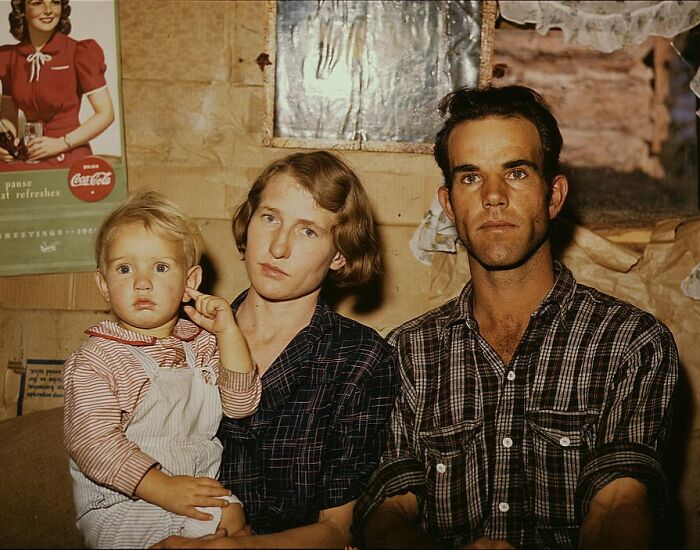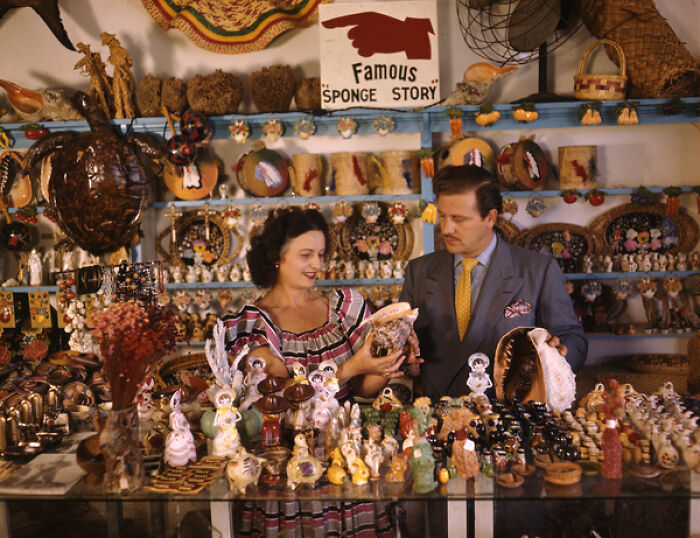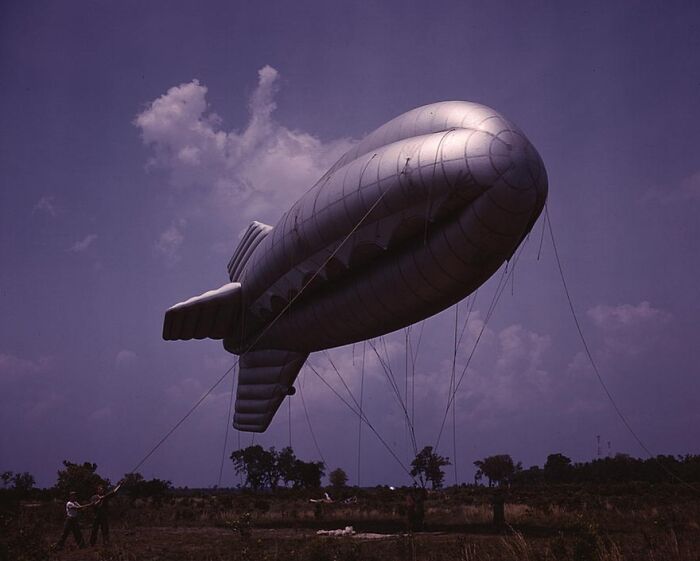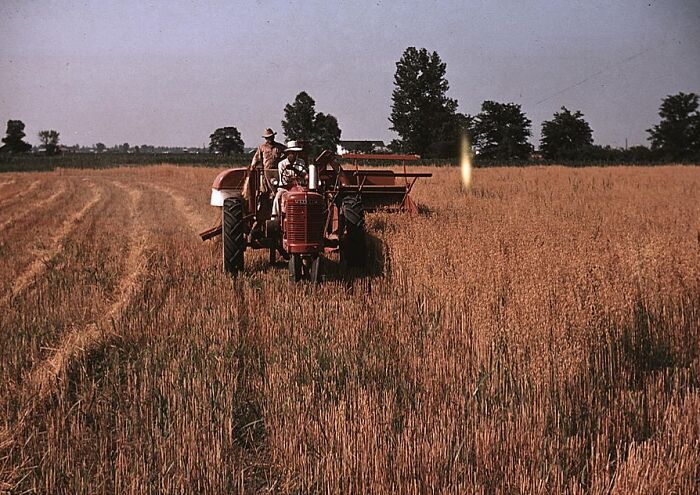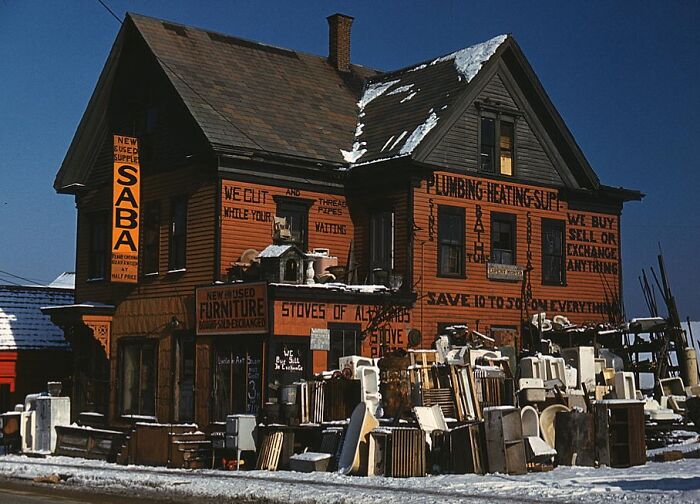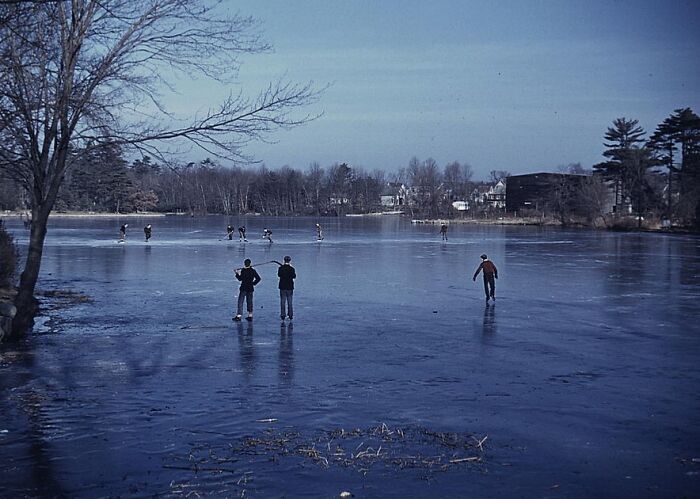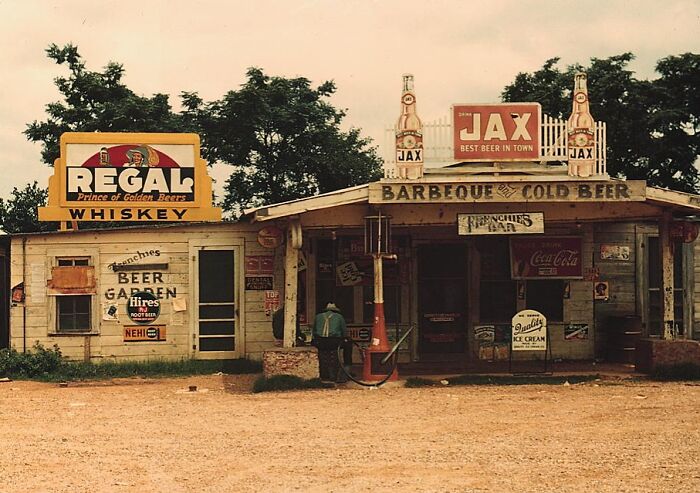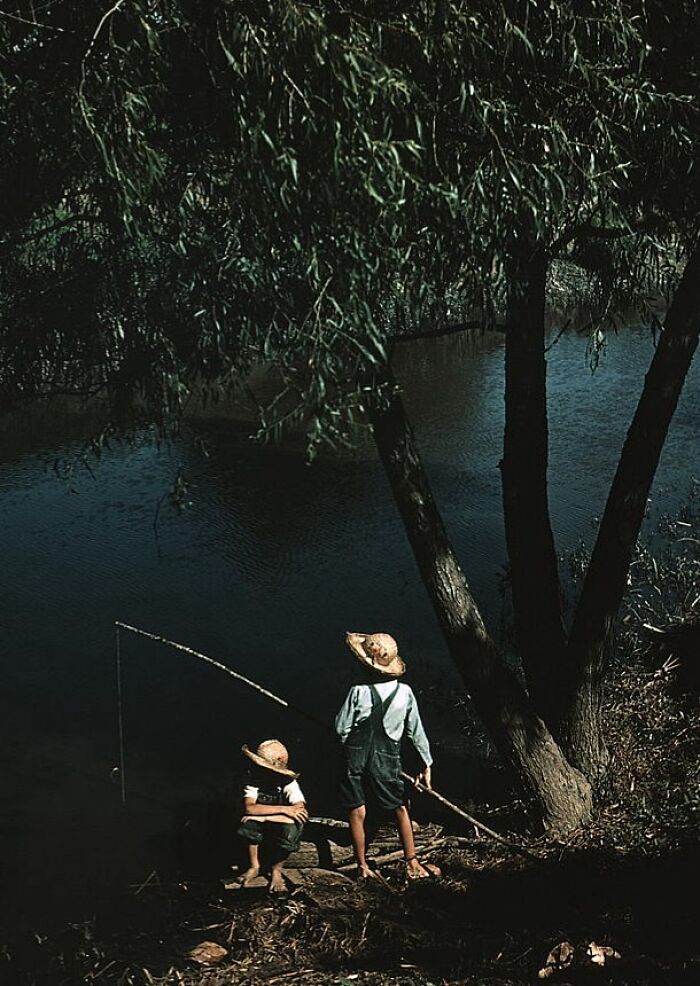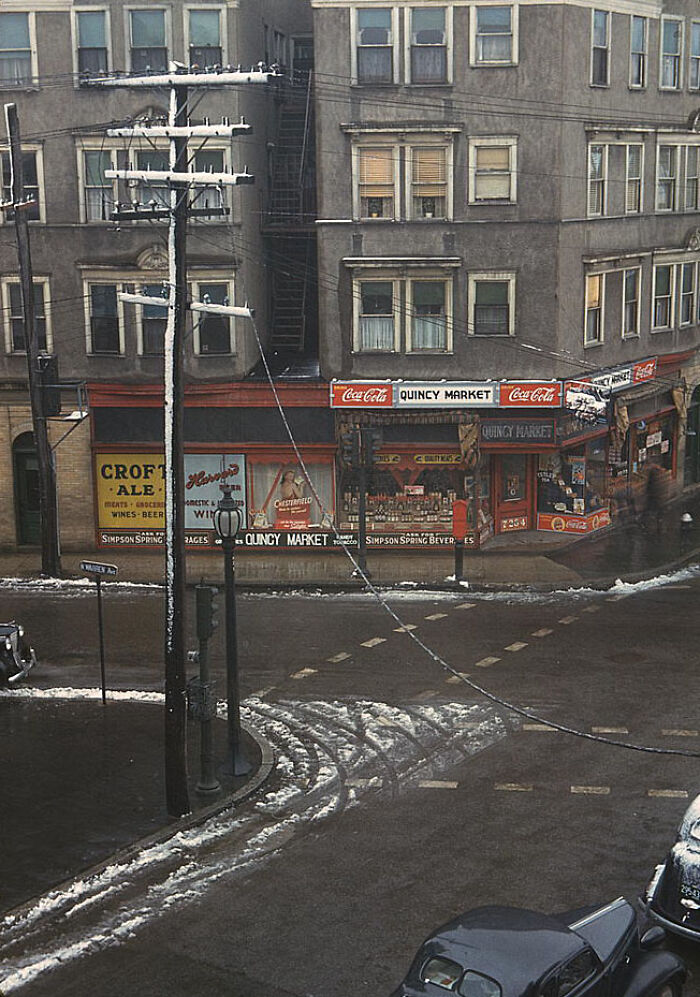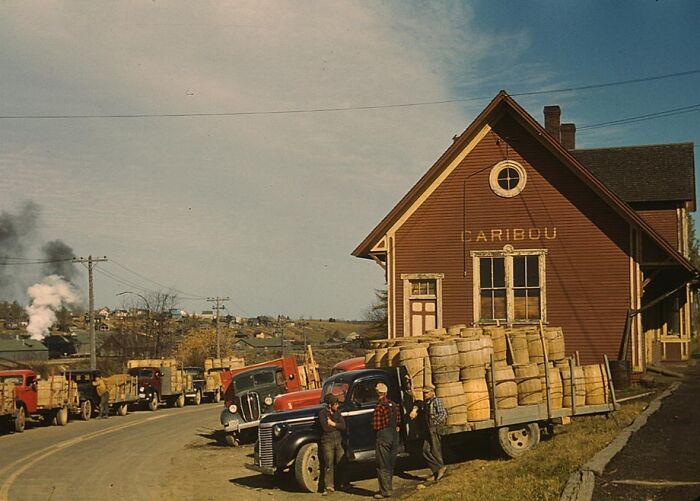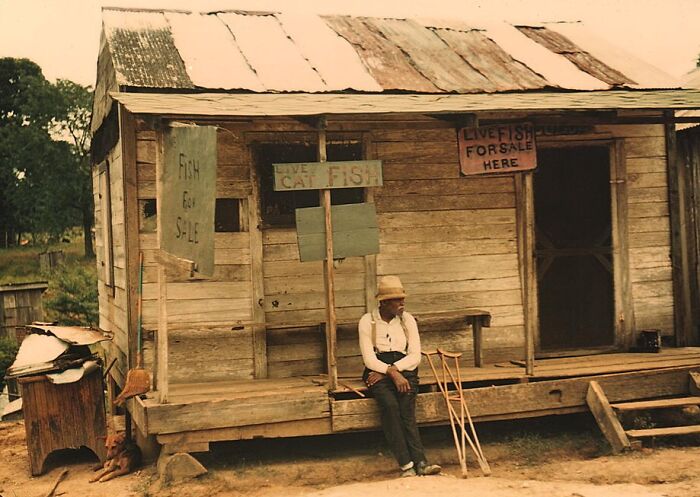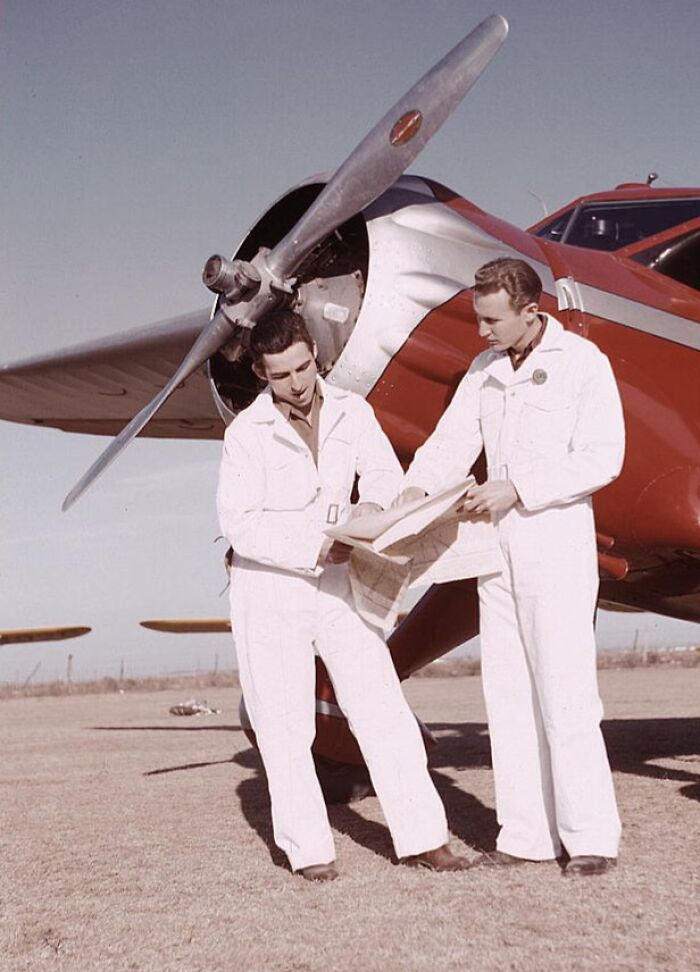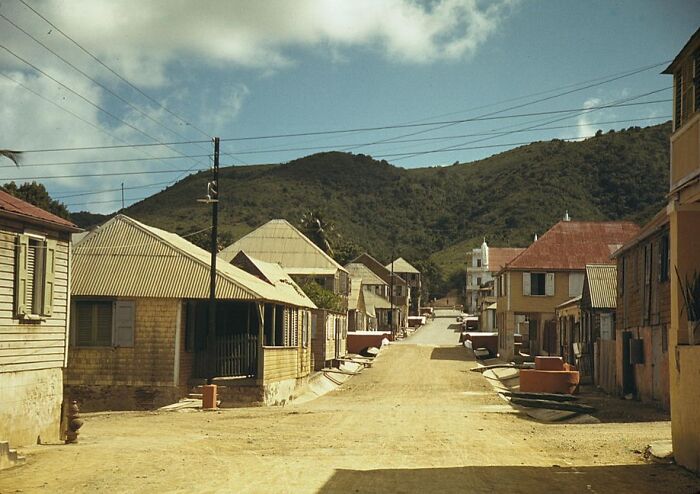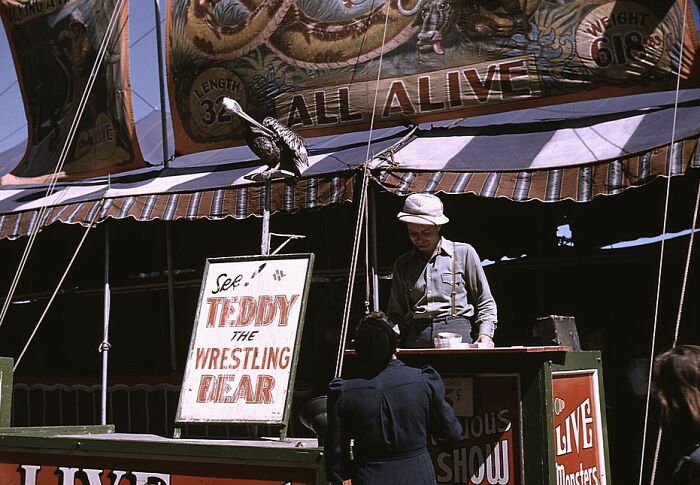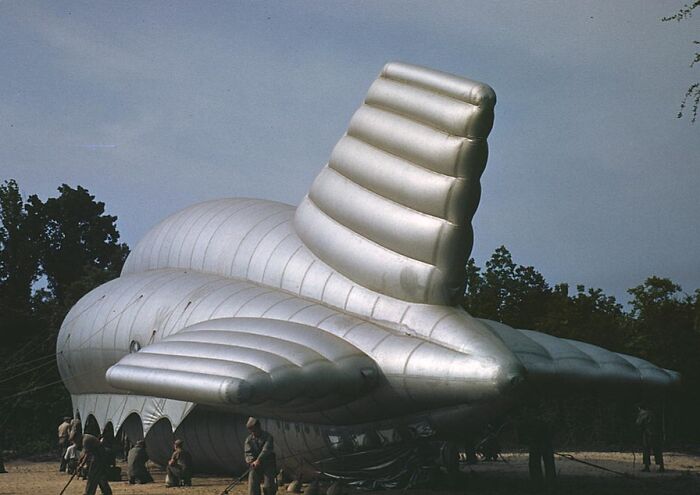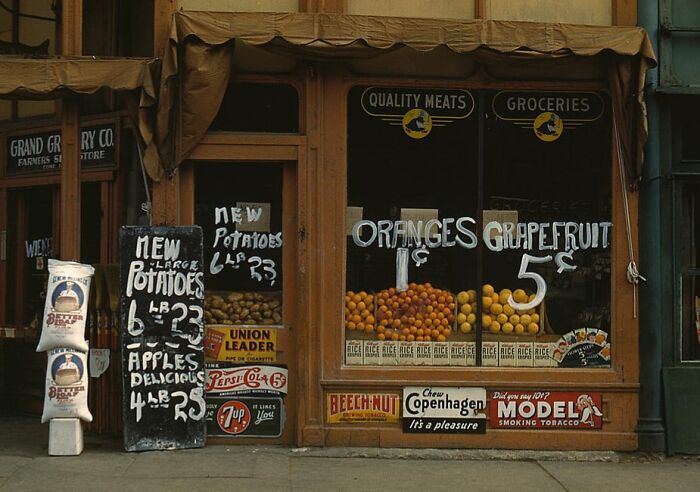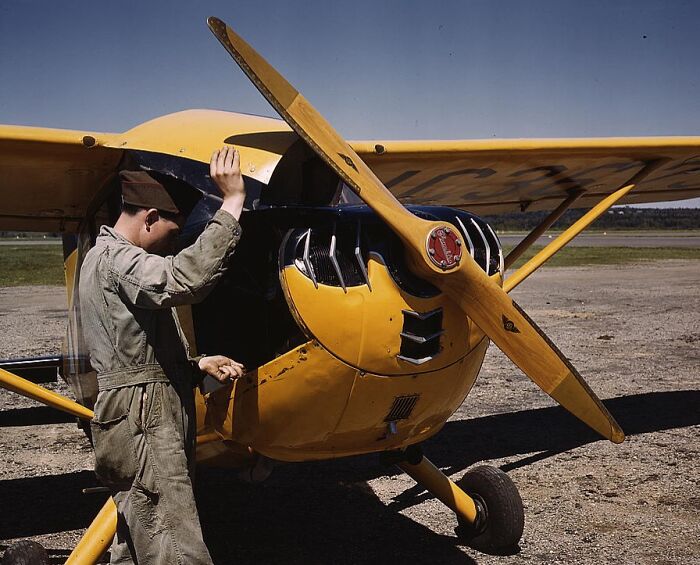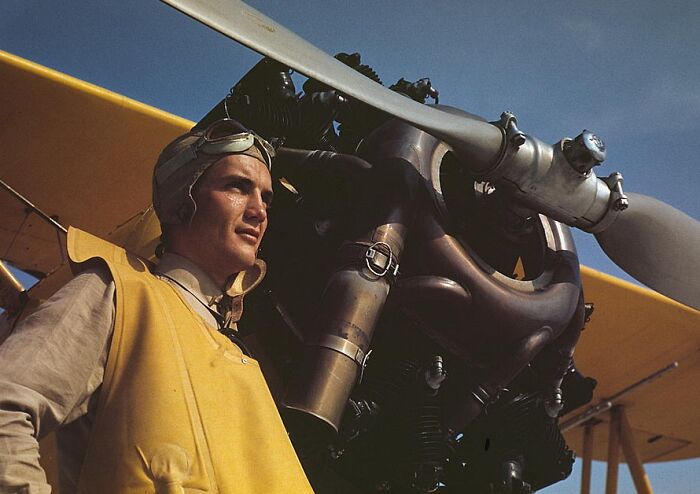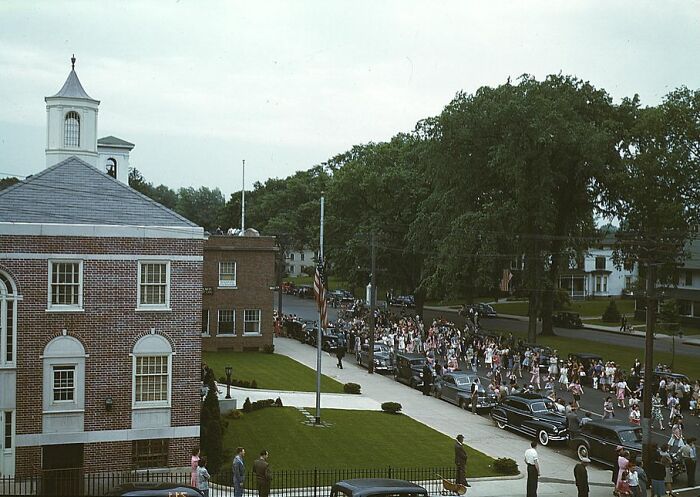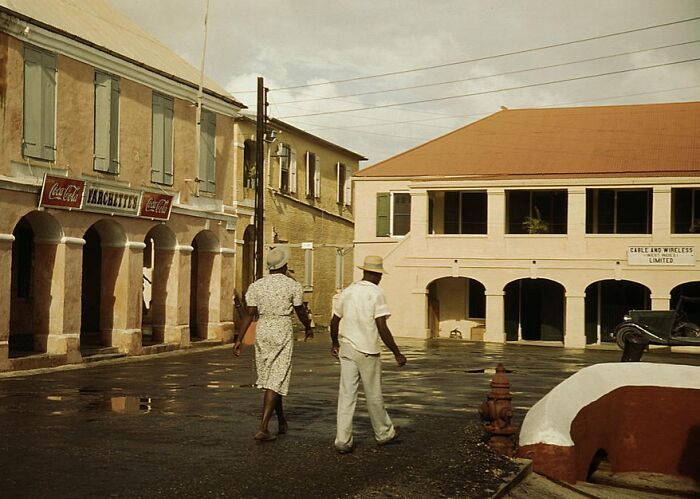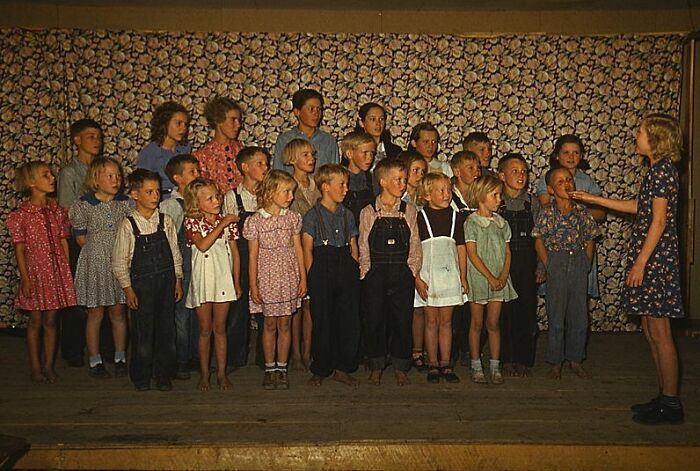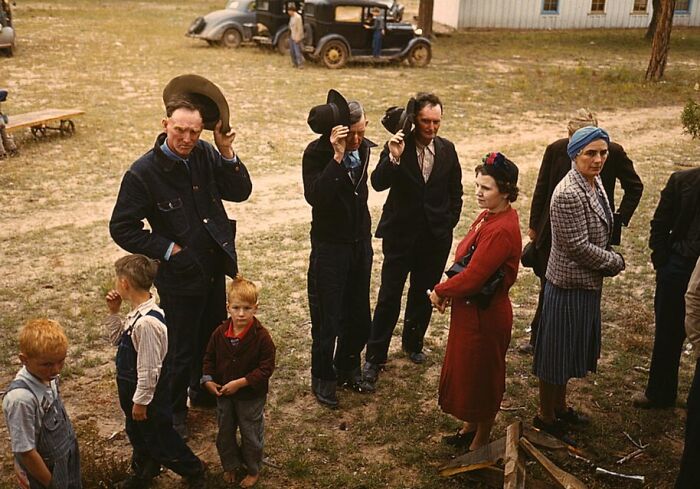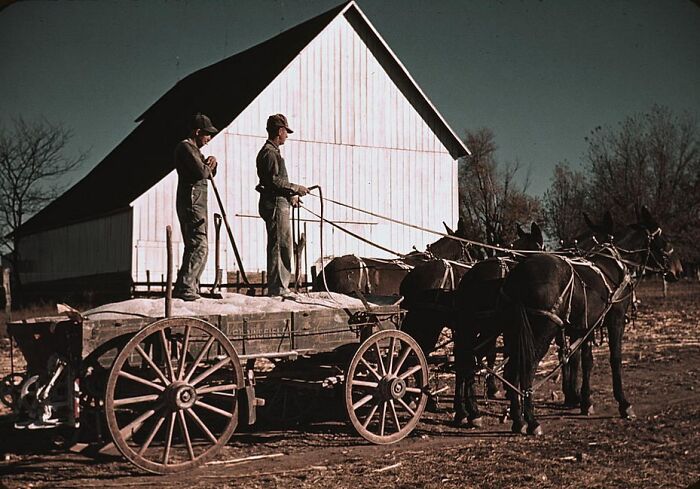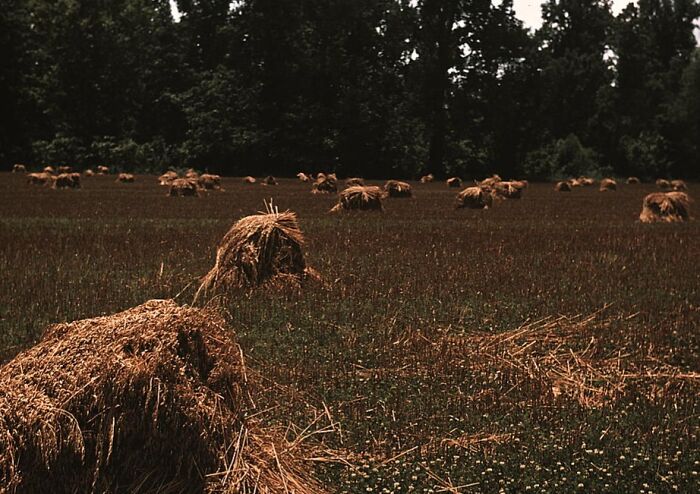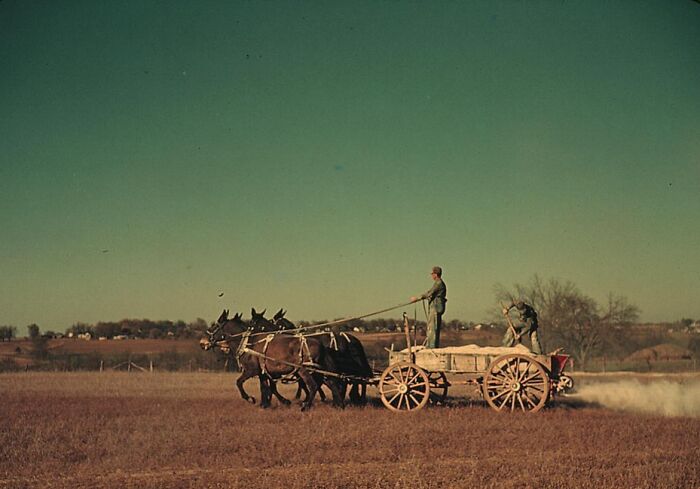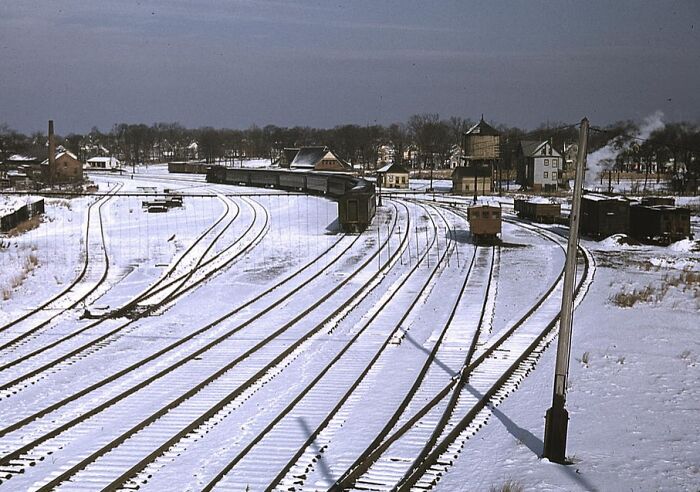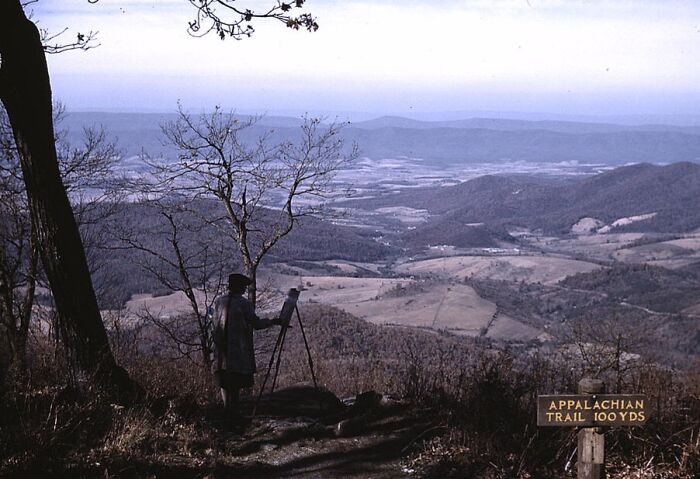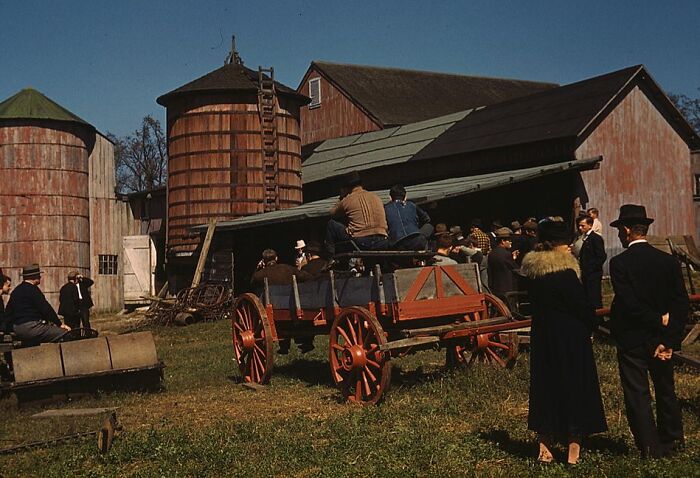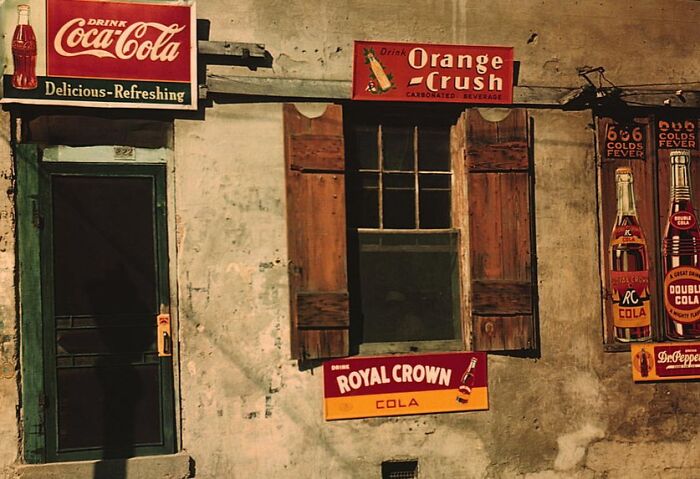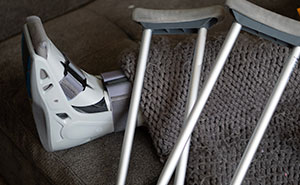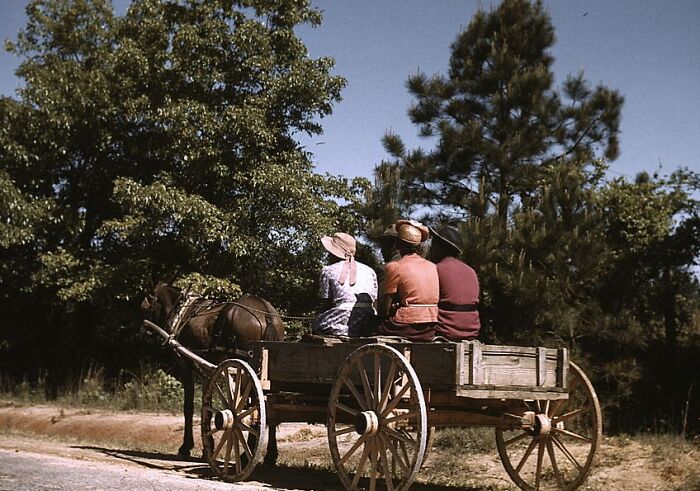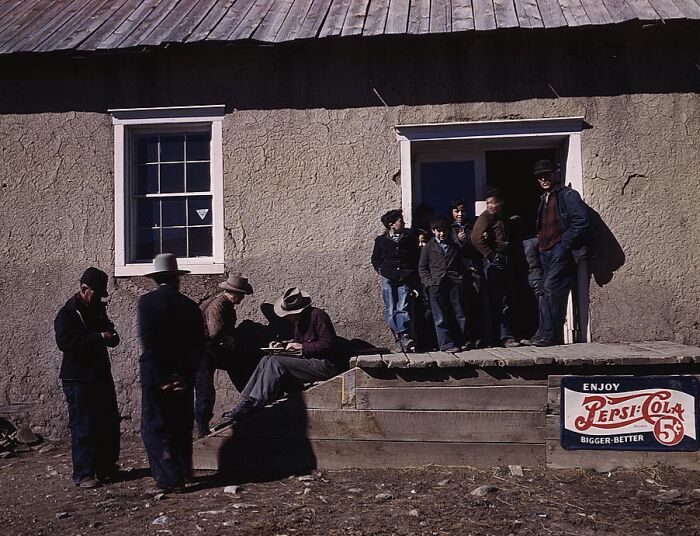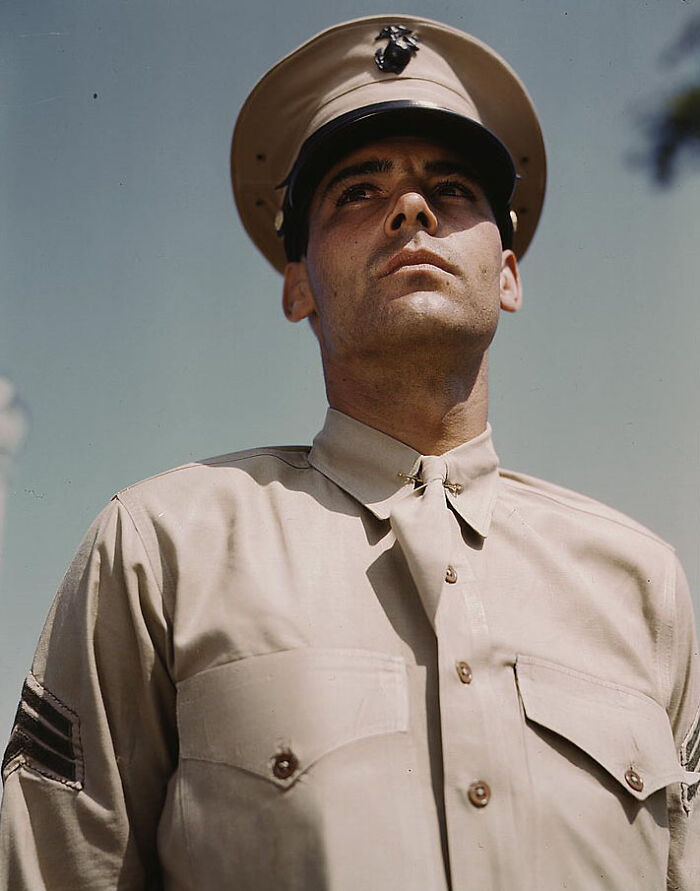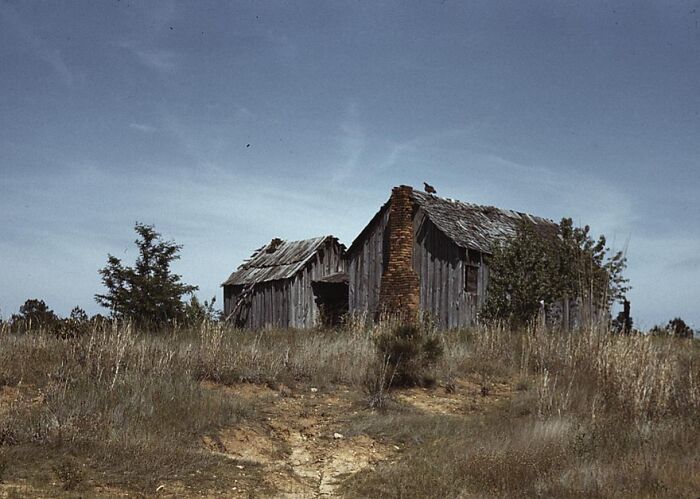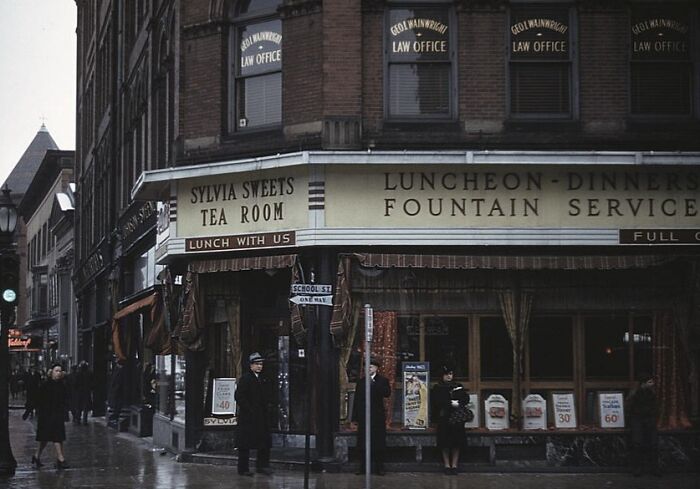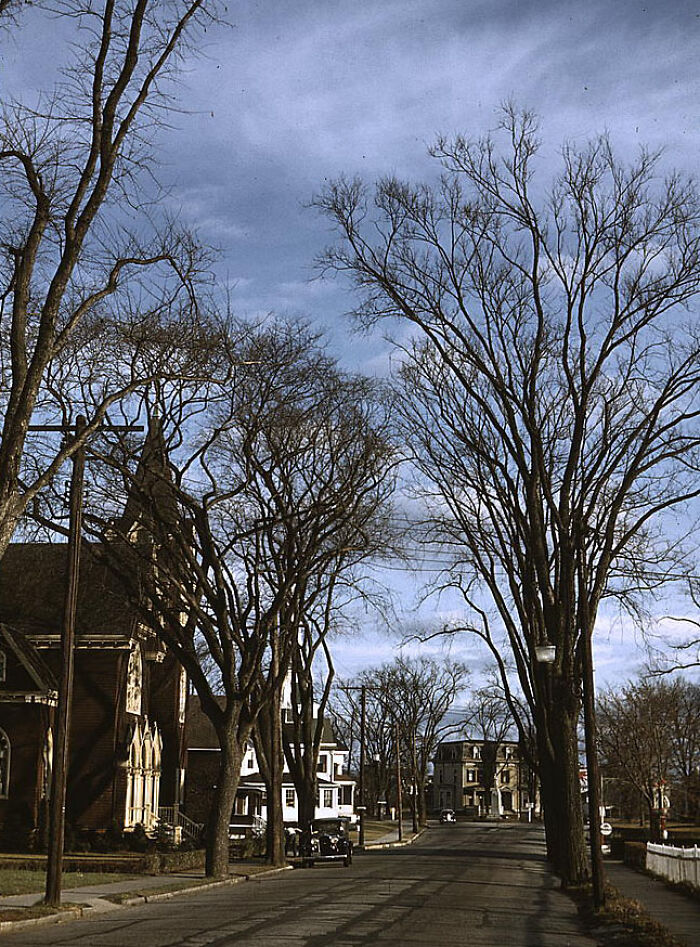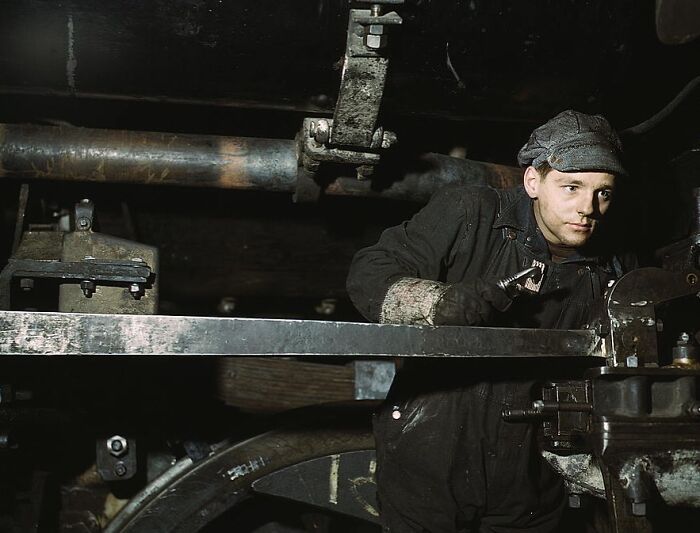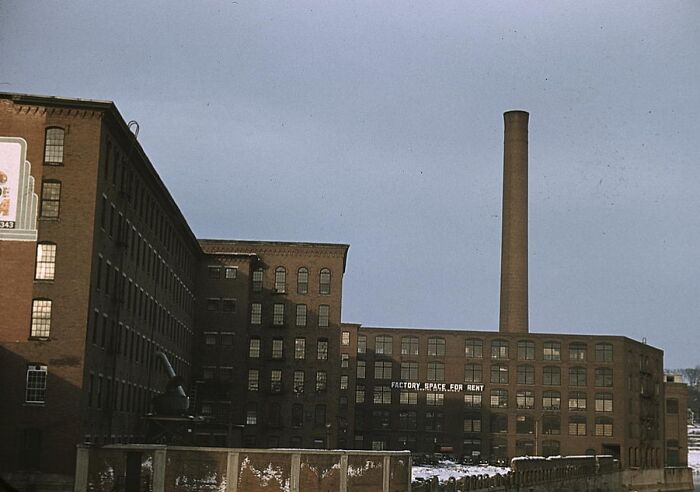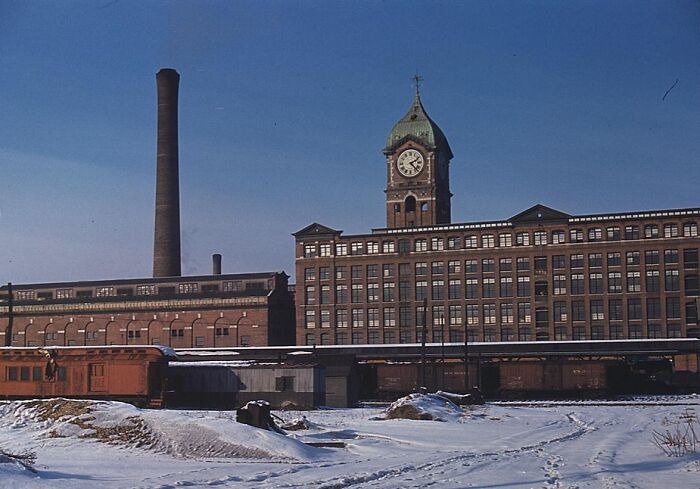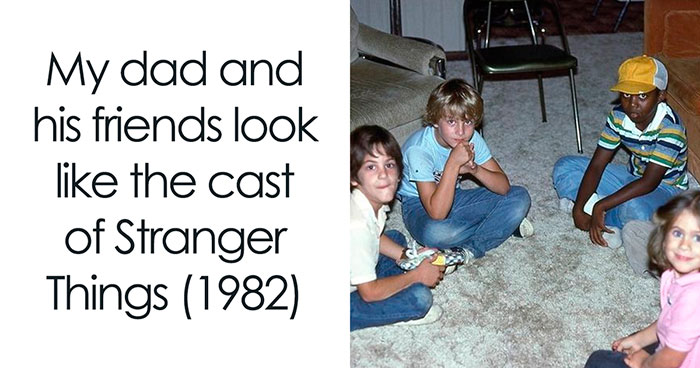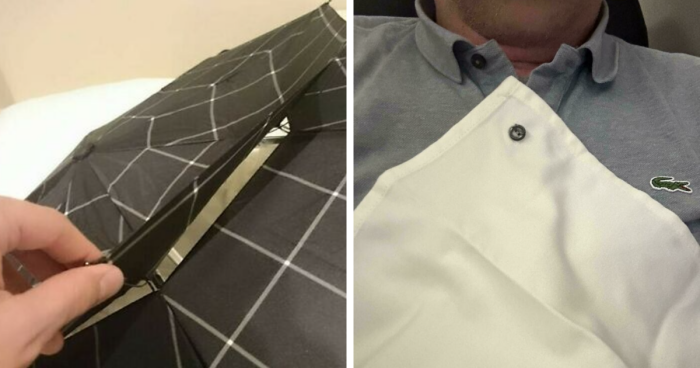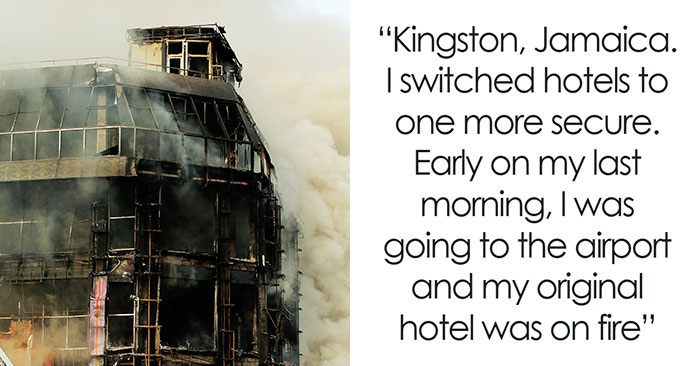Black-and-white photos have their own nostalgic charm, but sometimes they can feel a little distant, like glimpses of a world we can’t quite connect with. Now, imagine seeing those same vintage moments in full color—suddenly, history feels more real, almost like stepping into a time machine!
The Bored Panda team has scoured the internet to find some of the most stunning colorized photos from the 1940s. These beautiful images breathe new life into the past, turning historical moments into something more vivid and relatable. Keep scrolling to see history like you’ve never seen it before!
This post may include affiliate links.
Shepherd With His Horse And Dog On Gravelly Range, Madison County, Montana, 1942 Aug
My Mexican Grandma Looking Classy In A Typical Spanish Mantilla. Circa 1940
Crowds Of French Patriots Line The Champs Elysees To View Allied Tanks And Half Tracks Pass Through The Arc Du Triomphe, After Paris Was Liberated On August 25, 1944, 1944 Aug. 26
If you compare this to the foto of the German army doing the same thing in 1940, there were a lot more people watching and welcoming the second parade
Many of us love using black-and-white filters on our photos today, but back in the day, that was the only option! Imagine a world where every photo was captured in shades of gray, with no way to preserve the vibrant colors of life.
It wasn’t until much later that color photography became a reality, completely transforming the way we see history.
My Grandparents' Honeymoon In Switzerland, 1946
At The Vermont State Fair, Rutland, 1941 Sept
Those dresses remind me of the feed sacks that were popular in the early-mid 1900s. Farm suppliers came upon the nifty idea of selling animal feed in colorful print bags. Women (almost exclusively) would come with their husbands to choose the patterns/colors they liked. Store owners would get the feed bags in no particular order, but smart business people learned to sort by patterns to avoid having to sling bags around later. These bags were washed, dried, ironed, and turned into clothing and other items. Was a huge boon during the Great Depression, when frugality was the byword. https://americanhistory.si.edu/collections/object/nmah_1105750
Painting The American Insignia On Airplane Wings Is A Job That Mrs. Irma Lee Mcelroy, A Former Office Worker, Does With Precision And Patriotic Zeal
Mrs. Mcelroy Is A Civil Service Employee At The Naval Air Base, Corpus Christi, Texas. Her Husband Is A Flight Instructor, 1942 August.
Before color photography could exist, scientists had to first understand how light and color actually work. The journey began in the 17th century when Sir Isaac Newton used a prism to split sunlight, revealing that it was made up of seven colors.
This discovery laid the foundation for understanding how we perceive color and how it could eventually be recreated in images.
Rural School Children, San Augustine County, Texas, 1943 April
Camouflage Class In New York University, Where Men And Women Are Preparing For Jobs In The Army Or In Industry, New York.
They Make Models From Aerial Photographs, Re-Photograph Them, Then Work Out A Camouflage Scheme And Make A Final Photograph, 1943 March.
Bayou Bourbeau Plantation, A Farm Security Administration Cooperative, Vicinity Of Natchitoches, La. Three Children Sitting On The Porch Of A House, 1940 August
Fast forward nearly 200 years to 1861, when Scottish physicist James Clerk Maxwell demonstrated how color could be produced. He discovered that every color could be created by mixing different amounts of red, green, and blue light.
This experiment was groundbreaking and set the stage for future advancements in color photography.
"Backstage" At The "Girlie" Show At The Vermont State Fair, Rutland, 1941 Sept
At The Vermont State Fair, Rutland, 1941 Sept
Street Scene, Christiansted, St. Croix Island, Virgin Islands, 1941 Dec
To prove his theory, Maxwell photographed a tartan ribbon three times using red, green, and blue filters. He then projected the three images together using matching colored lights, and when they overlapped, a full-color image appeared. This was the first-ever color photograph, marking a huge leap in photography history!
Lincoln, Nebraska,1942
United Nations Fight For Freedom: Boy Scout In Front Of Capitol. They Help Out By Delivering Posters To Help The War Effort, 1943
Japanese-American Camp, War Emergency Evacuation, [Tule Lake Relocation Center, Newell, Calif] 1942 Or 1943
Bless their hearts for smiling in such an inhospitable place, while being treated like criminals. They were probably all born citizens, or at least naturalized. So many ugly things about American history. I fear we're in the midst of creating more blots for the history books.
While Maxwell’s theory was revolutionary, a practical way to capture and print color photos was still missing. Soon after, French physicist Louis Ducos du Hauron developed a method using colored pigments instead of light.
He took three black-and-white photos through red, green, and blue filters, then combined them with corresponding dyes to produce a color image. This technique eventually evolved into the modern color photography process we use today.
Girl Inspectors At The Long Beach, Calif., Plant Of Douglas Aircraft Company Make A Careful Check Of Center Wings For C-47 Transport Planes, 1942 Oct
"Girl inspectors" must have been taken directly from a description written at the time. I hope it wasn't written by the OP.
Woman Aircraft Worker, Vega Aircraft Corporation, Burbank, Calif. Shown Checking Electrical Assemblies, 1942 June
Critical work. Verifying circuits. WWII introduced aircraft with complicated electrical systems. Such a difference from the aircraft of WWI, and light-years away from modern aeronautical systems.
St. Paul's School Rowing
Narendra Singh, whose great-grandfather was a photographer in the black-and-white era, recalls stories passed down in his family. “I remember my father telling me about how long exposure times were and how film couldn’t capture the full range of colors,” he shared with Bored Panda. “It took so much effort to get a single good shot.”
Southern U.S., Mississippi, Ca. 1940
Instructor Explaining The Operation Of A Parachute To Student Pilots, Meacham Field, Fort Worth, Tex., 1942 Jan
The Virgin Islands, General View Of The Sea Coast In The Vicinity Of Christiansted, Saint Croix, 1941 Dec
He further added, “Developing a photo back then was a long and delicate process. Compared to today, where we can snap a picture instantly and print it in seconds, it’s almost unbelievable how far photography has come.”
Packing Oranges At A Co-Op Orange Packing Plant, Redlands, Calif. Santa Fe R. R. Trip, 1943 March
I miss those tissue wrappers. They were good for craft projects, back before colored tissue was available to ordinary kids.
Geologist Examining Cuttings From Wildcat Well, Amarillo, Texas, 1943
A Starch Factory Along The Aroostook River, Caribou, Aroostook County, Me., 1940 Oct
He also reflected on how amazed photographers from the past would be if they saw modern cameras and smartphones. “They would be shocked at how easy it is now—imagine telling them that we carry high-quality cameras in our pockets and can edit photos with a tap on a screen!”
Group Of Men Examining A Map. Transfer From U.S. Office Of War Information, 1944
Possibly photographed by Marion Post Wolcott
Jim Norris, Homesteader, Pie Town, New Mexico, 1940 Oct
Children In Street, Washington, D. C, Between 1941 And 1942
Looking at these colorized historical photos really puts things into perspective. They bring history to life in a way that black-and-white images never could. Which one of these photos stood out to you the most? Let us know in the comments!
M-4 Tank Crews Of The United States, Ft. Knox, Ky., 1942 June
Looks like they used football helmets (or did football helmets evolve from tank wear?)
Vjesse Rhodes Waller, A.o.m., Third Class, Tries Out A 30-Calibre Machine Gun He Has Just Installed On A Navy Plane, Naval Air Base, Corpus Christi, Texas, 1942 August
PBY Catalina. Unlike the long belts of ammo on B17s, he’ll have to reload magazines into that smaller caliber gun.
Sailor And Girl At The Tomb Of The Unknown Soldier, Washington, D.c., 1943 May
It's too bad that getting that close is no longer allowed. The Tomb of the Unknowns should not be a place of desecration.
Mrs. Virginia Davis, A Riveter In The Assembly And Repair Department Of The Naval Air Base, Supervises Chas. Potter, A Nya Trainee From Michigan, Corpus Christi, Texas
After Eight Weeks Of Training He Will Go Into Civil Service. Should He Be Inducted Or Enlist In The Armed Service, He Will Be Valuable To Mechanized Units Of The Army Or Navy, 1942 August.
Servicing One Of The Floodlights That Turn Night Into Day At The Big Construction Operations For A New Steel Plant
It Will Make Important Additions To The Vast Amount Of Steel Needed For The War Effort, Columbia Steel Co., Geneva, Utah, 1942 Nov.
Constructing A Building On The Site Of A New Steel Mill Which Will Soon Turn Out Steel For The War Needs, Columbia Steel Co., Geneva, Utah, 1942 Nov
Workers Leaving Pennsylvania Shipyards, Beaumont, Texas,1943 June
By the following year, many of these men were in the military, and women took over their jobs. If they made it home, the women were booted out and the men got their jobs back.
St. Croix, Virgin Islands, 1941 Dec
Children Stage A Patriotic Demonstration, Southington, Conn., 1942 May
Men Working On Telephone Lines, Probably Near A Tva Dam Hydroelectric Plant, 1942 June
On North American's Outdoor Assembly Line, A Painter Cleans The Tail Section Of A P-51 Fighter Prior To Spraying The Olive-Drab Camouflage Of The U.S. Army, North American Aviation, Inc., Inglewood, Calif., 1942 Oct
In The Roundhouse At A Chicago And Northwestern Railroad Yard, Chicago, Ill. 1942 Dec
Mike Evans, A Welder, At The Rip Tracks At Proviso Yard Of The C & Nw Rr, Chicago, Ill., 1943 April
Atchison, Topeka, And Santa Fe Railroad Conductor George E. Burton And Engineer J.w. Edwards Comparing Time Before Pulling Out Of Corwith Railroad Yard For Chillicothe, Illinois; Chicago, Ill. 1943 March
Instructor And Students Studying A Map, Meacham Field, Fort Worth, Tex., 1942 Jan
Woman Operating A Hand Drill At Vultee-Nashville, 1943 Feb
House, Houston, Texas, 1943 May
Commuters, Who Have Just Come Off The Train, Waiting For The Bus To Go Home, Lowell, Mass., 1941 Jan
Headlines Posted In Street-Corner Window Of Newspaper Office, Brockton Enterprise, Brockton, Mass., 1940 Dec
Children In The Tenement District, Brockton, Mass., 1940 Dec
At The Vermont State Fair, Rutland , 1941 Sept
Mountaineers And Farmers Trading Mules And Horses On "Jockey St.," Near The Court House, Campton, Wolfe County, Ky., 940 Sept
Distributing Surplus Commodities, St. Johns, Ariz.,1940 Oct
Faro And Doris Caudill, Homesteaders, Pie Town, New Mexico, 1940 Oct
Serving Pinto Beans At The Pie Town, New Mexico Fair Barbeque,1940 Oct
Boy Looking At Store Window Display Of Toys, Between 1941 And 1942
Shulman's Market, On N At Union Street S.w., Washington, D. C., Between 1941 And 1942
Burning The Autumn Leaves In Norwich, Connecticut, 1940 Nov
I realize how bad it is for us to burn leaves, but I really miss the smell, as long as they were dry.
Marine Lieutenants Studying Glider Piloting At Page Field, Parris Island, S.c.,1942 May
Freight Depot Of The U.S. Army Consolidating Station, Chicago, Ill., 1943 April
Welders Making Boilers For A Ship, Combustion Engineering Co., Chattanooga, Tenn., 1942 June
Woman Working On An Airplane Motor At North American Aviation, Inc., Plant In Calif., 1942 June
A Us Navy Christmas Dinner, Photographed Circa 1942-43
With A Woman's Determination, Lorena Craig Takes Over A Man-Size Job, Corpus Christi, Texas
Before She Came To Work At The Naval Air Base She Was A Department Store Girl. Now She Is A Cowler Under Civil Service, 1942 August.
Little Girl In A Park Near Union Station, Washington, D.c., Ca. 1943]
A Soldier And A Woman In A Park, With The Old Rrussell Senate Office Building Behind Them, Washington, D. C., Ca. 1943
A Noontime Rest For A Full-Fledged Assembly Worker At The Long Beach, Calif., Plant Of Douglas Aircraft Company. Nacelle Parts For A Heavy Bomber Form The Background, 1942 Oct
Children Gathering Potatoes On A Large Farm, Vicinity Of Caribou, Aroostook County, Me. Schools Do Not Open Until The Potatoes Are Harvested, 1940 Oct
Driver Of Marine Truck, New River, N.c., 1942 May
Melrose Park (Near Chicago), Ill., Roy Nelin, A Box Packer In The Roundhouse At The Proviso Yard, 1942 Dec
Laundry, Barbershop And Stores, Washington, D. C., Between 1941 And 1942
Jack Whinery, Homesteader, With His Wife And The Youngest Of His Five Children, Pie Town, New Mexico, 1940 Sept
John M. Gonatos In His Curio Shop With Assistant Niki Vasilikis: Tarpon Springs, Florida, 1942
Parris Island, S.c., Barrage Balloon, 1942 May
Harvesting Oats, Southeastern Georgia, Ca. 1940
Brockton, Mass., Dec. 1940, Second-Hand Plumbing Store, 1940 Dec
Skating, Vicinity Of Brockton, Mass., 1940 Dec
A Cross Roads Store, Bar, "Juke Joint," And Gas Station In The Cotton Plantation Area, Melrose, La., 1940 June
Boys Fishing In A Bayou, Schriever, La., 1940 June
Street Corner, Brockton, Mass., 1941 Jan
Trucks Outside Of A Starch Factory, Caribou, Aroostook County, Me
There Were Almost Fifty Trucks In The Line. Some Had Been Waiting For Twenty-Four Hours For The Potatoes To Be Graded And Weighed, 1940 Oct.
A Store With Live Fish For Sale, Vicinity Of Natchitoches, La., 1940 July
Student Pilots, Meacham Field, Fort Worth, Tex., 1942 Jan
Street In A Town In The Virgin Islands, St. Thomas, 1941 Dec
Barker At The Grounds At The Vermont State Fair, Rutland 1941 Sept
U.S. Marine Corps, Bedding Down A Big Barrage Balloon, Parris Island, S.c., 1942 May
Grand Grocery Co., Lincoln, Neb., 1942
Oranges for a penny! Six pounds of spuds for 23 pennies! Grapefruit for 5 pennies. Four pounds of apples for a quarter! You could feed your family well for a dollar.
Civil Air Patrol Base, Bar Harbor, Maine. Ground Crew Making A Routine Overhaul Of A Patrol Plane, Coastal Patrol #20, 1943 June
Marine Lieutenant By The Power Plane Which Tows The Training Gliders At Page Field, Parris, Island, S. C., 1942 May
An American Town And Its Way Of Life, Southington, Conn
The Memorial Day Parade Moving Down The Main Street. The Small Number Of Spectators Is Accounted For By The Fact That The Town's War Factories Did Not Close. The Town Hall Is In The Left Foreground. May 23 To May 30, 1942 May.
Street In A Town In The Virgin Islands, Christiansted, St. Croix, 1941 Dec
School Children Singing, Pie Town, New Mexico, 1940 Oct
Saying Grace Before The Barbeque Dinner At The Pie Town, New Mexico Fair, 1940 Oct
Southeastern Georgia, Ca. 1940
Typical Southeastern Georgia Farm With Newly Harvested Field Of Oats, 1939 May
Georgia Oat Field? Southern U.S., Ca. 1940
Train And Several Sets Of Railroad Tracks In The Snow, Massachusetts, 1940 Dec. Or 1941 Jan
A Woman Painting A View Of The Shenandoah Valley From The Skyline Drive, Near An Entrance To The Appalachian Trail, Virginia, Ca. 1940
Farm Auction, Derby, Conn., 1940 Sept
Store Or Cafe With Soft Drink Signs: Coca-Cola, Orange-Crush, Royal Crown, Double Cola, And Dr. Pepper, Natchez, Miss., 1940 August
Going To Town On Saturday Afternoon, Greene County, Ga., 1941 May
General Store, Chacon, New Mexico, 1943 Spring
Marine Sgt. At New Orleans, La., Between 1941 And 1945
Cabin In Southern U.S., Ca. 1940
Sylvia Sweets Tea Room, Corner Of School And Main Streets, Brockton, Mass., 1940 Dec. Or 1941 Jan
Street Scene, Mystic, Connecticut, Ca. 1940 Dec
A Young Worker At The C & Nw Rr 40th Street Shops, Chicago, Ill., 1942 Dec
Factory Buildings In Lowell, Mass., 1940 Dec. Or 1941 Jan
Railroad Cars And Factory Buildings In Lawrence, Mass., 1941 Jan
I loathe "colorized photos". They are literally distorting the past - since unless the colorist was there at the time the photo was taken, they have NO idea what the colors actually were. Speculating and inserting their own color palette makes it historical revisionism - changing history (in the form of b+w photos) into something they're not: color photos. The integrity and reality of the original image is being compromised when colors are added based on guesswork and assumptions. It distorts reality and alters the historical accuracy of a b+w photo to add color.
I loathe "colorized photos". They are literally distorting the past - since unless the colorist was there at the time the photo was taken, they have NO idea what the colors actually were. Speculating and inserting their own color palette makes it historical revisionism - changing history (in the form of b+w photos) into something they're not: color photos. The integrity and reality of the original image is being compromised when colors are added based on guesswork and assumptions. It distorts reality and alters the historical accuracy of a b+w photo to add color.

 Dark Mode
Dark Mode 

 No fees, cancel anytime
No fees, cancel anytime 



